I have had the pleasure of being involved with, or assisting with the writing up of, many of the Tenindewa.com stories since about 2014 (Tenindewa’s Centenary Year) but the Critch story has been late to appear in the list of stories by contrast to other original settlers such as Meadowcroft, Rumble, Stokes, Fry, Stafford and Brenkley.
The catalyst that set each of the above names and others into the Website’s story-list is the book “To Sow the Barley” written by Doreen Lindsay (nee Butler) in 1988. This initiative by Doreen has created a simple but hugely important manuscript that helps paint a picture of the lives of the many early settlers in Tenindewa and it has become the springboard for others (offspring) to publish their family’s story. From a research point of view, it is important to note that this manuscript, starting on page 9, contained an extensive “roll of residents” who were associated with Tenindewa in those early days. (Some 200 names over 70 years and including their occupations)
She writes……
The first farmers came with, as far as I know, a shovel, pick, a team of horses, a drill with two or ten furrows and a cultivator, such as Arnold Meadowcroft, Alex and Nat Rumble, Harry Stokes, Norman Fry, Leo Critch, Henry Stafford and Walter Brenkley, to take up land around the railway line. So started this [farming] era from 1905 on …………The “Railway Gang” was established long before and houses were built along the line for them (1893). It was [back] then that the little station began to flourish
Doreen (Butler) Lindsay
Trove
Further to Doreen’s information, a more uncut and complete feed of historic newspaper articles featuring Tenindewa have been unearthed thanks to “Trove“. These articles which have become available more recently, cover roughly a 20-year period (1910-1930) and they have more lately contributed to building further the picture of the day-to-day life in the Tenindewa district. They emanate mainly from the “Geraldton Express”, a newspaper of yesteryear that was seemingly rolled into the “Geraldton Guardian” in about 1930. These dozens and dozens of articles were penned mostly under intriguing nom de plumes such as “Our Correspondent”, “An Occasional Correspondent” and many others, but by far and away most numerously, under “Our own Correspondent”. What can be confidently concluded on close scrutiny is these three correspondents are, despite the pseudonyms sounding quite similar, definitely not one and the same person?
The writer, being one of Leo’s two surviving “Critch” grandsons and naturally having an inherent interest in all things Tenindewa has always been especially interested in preserving its history. However, a puzzle that has arisen within that history that has always been a nagging is, “what happened to Leo?” In as much as Leo Critch was mentioned as an early pioneer in the quote (immediately above) in Doreen Lindsay’s book, reports of Leo’s activities are surprisingly scant in all those volumes of “Tenindewa Notes” in the “Geraldton Express” and especially compared to the likes of his many immediate neighbors as per the Fry’s, Stafford’s, Stokes, Troys , Oldham and others?
As it turns out there is, or there could be, quite a fascinating explanation to this historical hiatus which will progressively rollout as this story goes forward, but more of that anon?
Leo’s early life however, i.e. pre Tenindewa, is more traceable and authoritative and in summary it read as follows.
Francis Henry
Leo was part of a classic conservative working-class family who would have been tentatively finding their way in the fledgling Colony of Western Australia just a little pre-Federation. The Colony was still less than 60,000 people at that time and Geraldton less than 3000.
Leo was born in Geraldton on the 15th of December 1890 to Francis Henry and Annie (nee Kelly) Critch. Francis Henry, his father, would most probably have been a well-recognized name around Geraldton in those days as he was a Town Councilor for a number of years and coupled to this, he had exposure via his various portfolios with the “Geraldton Express” newspaper. This newspaper eventually became absorbed into what is now known as the “Geraldton Guardian”.
Francis Henrys tenure at the “Express” was from 1882 to 1924. Over those 42 years with that newspaper, he held the positions of printer, editor and manager and sometimes two positions simultaneously which would not have been uncommon with fledgling country newspapers.
Visualizing a family of that ilk in those time is assisted greatly by a paragraph from a book (Hearts to Dare) written by Moya Moore giving us a glimpse into their everyday lives and illuminating for us the demeanor of such a family at that time.
Christmas Eve 1893:
On that evening Jack [Grandfather John Kelly] paid Annie and Francis his customary visit while Emily [Annies’s mother] put their weary children and herself to bed. He [Jack] and Francis would have planned how they would win the cricket match the next day as they shared an evening pint while Annie fed baby Alma and heard Madaline, 6, and the four boys, Frank 9, Bill 8, Tom 4 and Leo 2, angelically saying their prayers before they dropped off to sleep.
Interestingly, Francis Henry was employed by a Mr. John Michael Drew who owned the Geraldton Express from 1895 to 1929. It was during this time that the Geraldton Guardian and the Geraldton Express became one newspaper. The two officially amalgamated on the January the 3rd 1929 and became the “Geraldton Guardian and Express” and publications under “The Geraldton Express” ceased. An immediate result of the merger was that the masthead and paper became known (for a period anyway) as the “Geraldton Guardian and Express”
.
Mr. John Michael Drew (MLC) was a member of Parliament on two separate occasions during which time he held various ministerial port folios including those of the Agriculture Ministry and also that of a very ancient portfolio known as “Colonial Secretary”.
Drew said of Francis Henry at the time of his handing over of the combined newspaper in 1924, “On my leasing the “Express” Mr. Francis Henry Critch retired after a long and honorable connection with the paper. For over forty years he had been foreman, printer and filled the position of manager for five years when I was previously in Ministerial Office, discharging the duties diligently and conscientiously.”
He was once described in his later years by newspaper peers in Geraldton as “the father of all Geraldton printers”
For the record, it is worthy of mention that Francis Henry’s eldest son, one of Leo’s brothers in Frank Critch, also served a couple of terms with the Geraldton Municipal Council. In that vein, worthy of mention also is Kevin Critch, grandson of Francis Henry and son of Leo, who served on the Mullewa Council in the 1960s and 1970s. Mullewa, as a Local Government District, has now been rolled into the Geraldton Municipality and if we fast forward some 100 years from Francis Henry’s time, Jen Critch, the wife of one of Francis Henry’s Great, Great, Grandsons, is a serving councilor and has been for several years on what is now, The City of Greater Geraldton.
The Kellys

Reflecting further on the generations of the past we note, Annie Kelly (Leo’s mother 1863-1921) was the daughter of Geraldton’s first lighthouse keeper and further, in the best interests of local history, it is worthy of mention that she became, involuntary, a conspicuous central figure in the conviction and eventual hanging of an extremely high-profile member of the Geraldton community in the year 1876.
Mr. Kenneth Brown, was a prominent member of the Geraldton “establishment” and part of the (Glengarry) Brown family but most poignantly, was the father of Ms. Edith Cowan who is still possibly Australia’s most famous woman politician. As astonishing as it might sound, Kenneth Brown, that pillar of Geraldton society was charged with and eventually hung for, the murder of his second wife.
Annie Kelly and her sister Alisia (1861-1916), worked for Kenneth Brown as babysitters and in home help type duties. Ruefully, Annie not only witnessed this gruesome crime but was consequentially and eventually required to take the stand to give, what was described as pivotal evidence. Miss Annie Kelly was just 13 years old at the time.
In the last of three trials that it took to finally convict Brown, Annie testified that she had seen him in the act of the disposing of a firearm that was proved to be used in that horrendous crime.
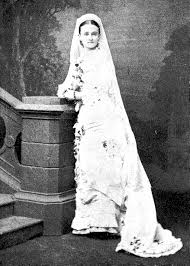
(Courtesy WA Historical Society)
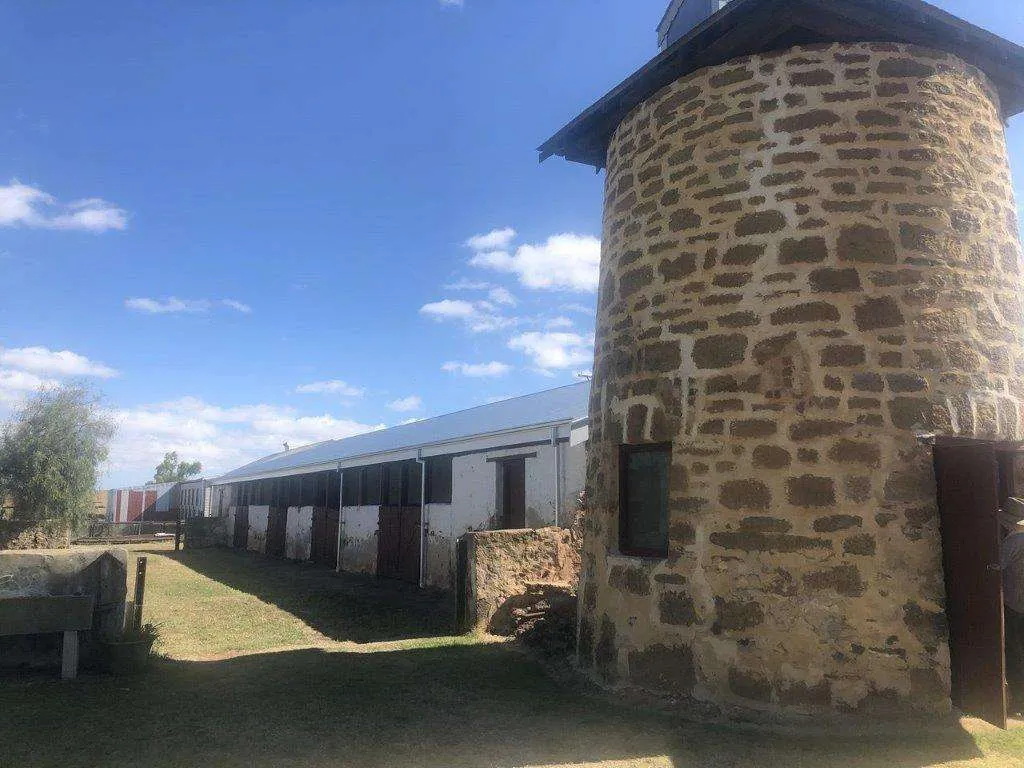
Incredibly, in 1877 and very soon after the Keneth Brown saga Annie was employed by a Mrs. Drummond of White Peak near Drummond’s Cove north of Geraldton where she was exposed to the fallout of another crime that was bizarrely and loosely connected to the first, and this time at the home of another prominent colonial citizen in that of a Mr. John Drummond. This incident took place on Drummonds’ farm at White Peak north of Geraldton.
Drummond was the Colony’s first inspector of Native Police, a pastoralist, a miner, and an explorer. “Drummond’s Cove” a northern suburb of Geraldton bears his name.
Annie, at the tender age of 14 was employed by this Mrs. Drummond to help care for a baby named Rosa. Somewhat sadly, this baby was the very child recently orphaned as a result of the passing of her parents in that of the murdered, Mary Brown and that of her disgraced husband in Kenneth Brown who was hung as a consequence of that shocking crime!
For the record “Baby Rosa” was, naturally, a half-sister to the aforementioned and now famous Mrs. Edith Cowan (nee Brown).
John Drummond was as a result of the shooting and wounding of a Mr. John Fisher, a neighbouring farmer, charged with “attempted murder” but was eventually convicted of a lesser a crime for which he served three years jail.
The Drummonds, who had no children of their own, had adopted this child soon after Annie’s employ began and it is very possible, though not documented, that Annie was employed by the Drummonds specifically, because it would have been known that she had a recent and nurturing connection with this “baby Rosa Brown” in her past employ with the Kenneth Brown family.
Later, and from a Tenindewa perspective, Annie also had a quite unique double family connection to the famous Tom Moore of Indarra. The Honorable Tom, a settler who also spent 35 years in politics and farmed locally, tragically lost his first wife Evelyne (Kelly), Annie’s niece in 1925. Four years later Tom remarried, and this time to Evelyne’s youngest sister in Glady, who was obviously Annie Kelly/Critch’s niece also.
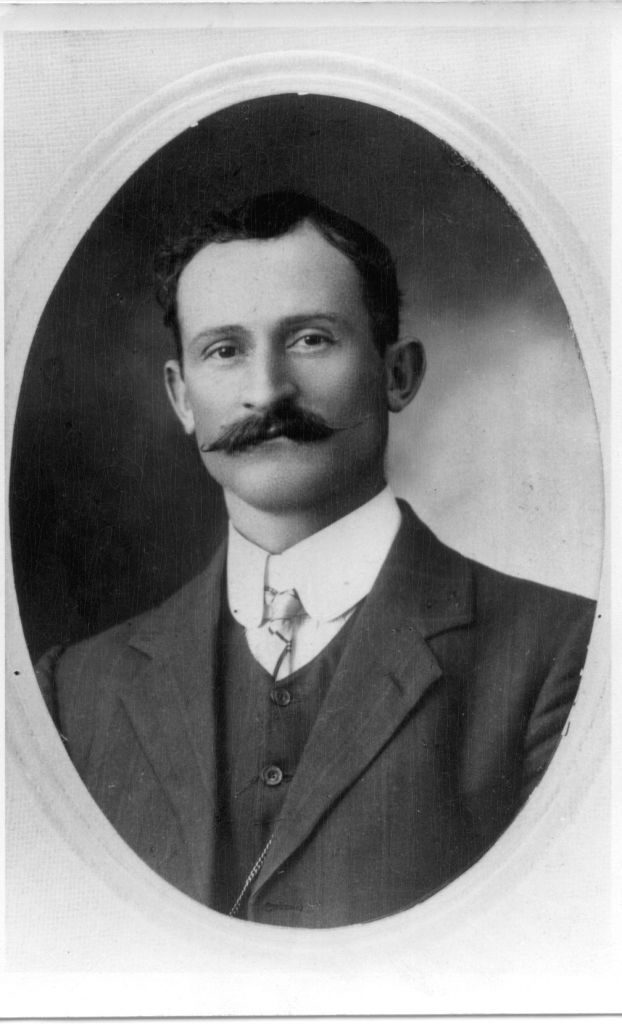
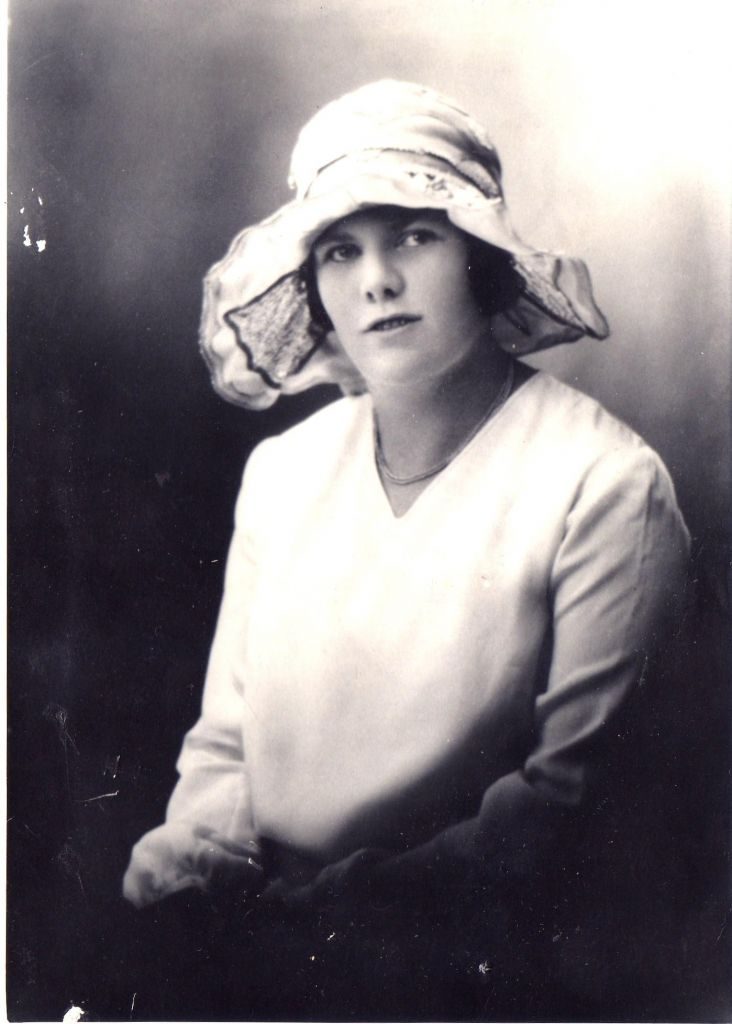
(The renovated Indarra Siding shed still stands today and is situated 72 kilometers by road east of Geraldton. The long-departed Station Masters House is pictured as it was in Tom Moore’s day. The children in the photo are Robbie and Wally Weir with their sister Zora)
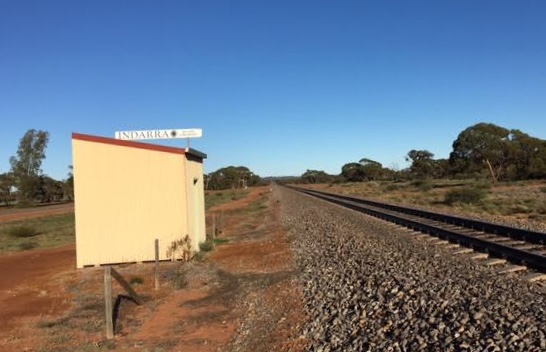

Annie’s Passing
Annie Critch (Leo’s Mother) passed away in April 1921
Geraldton Guardian Thursday April 7th, 1921,
Death of Mrs. Critch, Sen. — It is with regret that we record the death of Mrs. Annie Critch, wife of Mr. Francis Henry Critch, printer of our contemporary, and mother of Mr. Frank J. Critch, manager of Mr. Charles Horsmann’s Geraldton business. The sad event occurred before dawn on Wednesday after a long illness, at their residence in Shenton Street, Geraldton, where she had lived many years, having reached the age of 59 years and reared a large family of sons and daughters, who are as well and favorably known throughout the district as their respected parents. Deceased was a daughter of the late Mr. John Kelly, a Crimean veteran, and one of the first settlers in the Victoria District. Messrs. John and Michael Kelly, of the Railway Department, Geraldton, are brothers.
The daughters are, Mrs. Collins, of Glenburgh Station, Gascoyne, Mrs. E P Smythe. and Mrs. Grace Collins and Kathleen Critch. The other sons are Messrs. W. H. Critch (Sydney)and Tom, Leo, and Charlie, who reside in the district. The funeral took place yesterday and was largely attended. From the residence the cortege proceeded to the Roman Catholic Cathedral, where an impressive service was conducted by Bishop Kelly. who also headed the procession to the R.C. cemetery, on the Eastern Road, and then read the concluding obsequies for the dead. The pallbearers were Messrs. J.M. Drew, T. E. de Lucey, P. Stone, and B. C. Tindal. Amongst the chief mourners were the husband and three sons of the deceased (Frank, Tom and Charlie) the two brothers (J. and M. Kelly), E. P. Smythe (son-in-law), and J. Kelly, jun. (nephew). Mr. George Lester, undertaker, supervised the arrangements. Smythe, and the Misses Grace and Kath Critch [Sic]
Putting a Toe in Tenindewa
Leo according to family oral history, on leaving Stella Maris School in Geraldton, worked weekdays with Green’s Department Store in Geraldton while working weekends on a virgin block at Tenindewa. Further to this and referencing a book titled “On the Road Again” written by one of his son’s Kevin Critch he worked in a pastoral property at Tenindewa named Kockatea Station, which was owned by the conglomerate, “Copley Brothers”, and was managed by a Mr. Norman Fry. Interestingly Fry managed this property from 1903 through to 1911 when he then took up farming at Tenindewa on his own account and at the same time that Leo Critch made his start at farming. (Leo would have been 21 at that point in time)
Norman Fry, in accord with much written history, was a district leader who had much positive influence on the early development of Agriculture in the Mullewa district? This is evidenced by an extract from an article in the Geraldton Express, dated 1912, which highlights a speech given on the occasion of the opening of the very first Town Hall in Mullewa by Fry in his role as the representative of the Tenindewa community.
In that speech Mr. Fry stated that
“it was 12 years ago [1900] since he first landed in the Mullewa district. At that time, none [sic] with the exception of a Mr. Smith had done anything in the way of cultivation as the district had been considered unsuitable for farming purposes. He experimented with 5 acres on Kockatea Station in 1901 and being encouraged by the results he gradually increased the area and thus he thought he could justly take the credit of being the first to demonstrate that payable crops could be produced”. [in the Mullewa District]
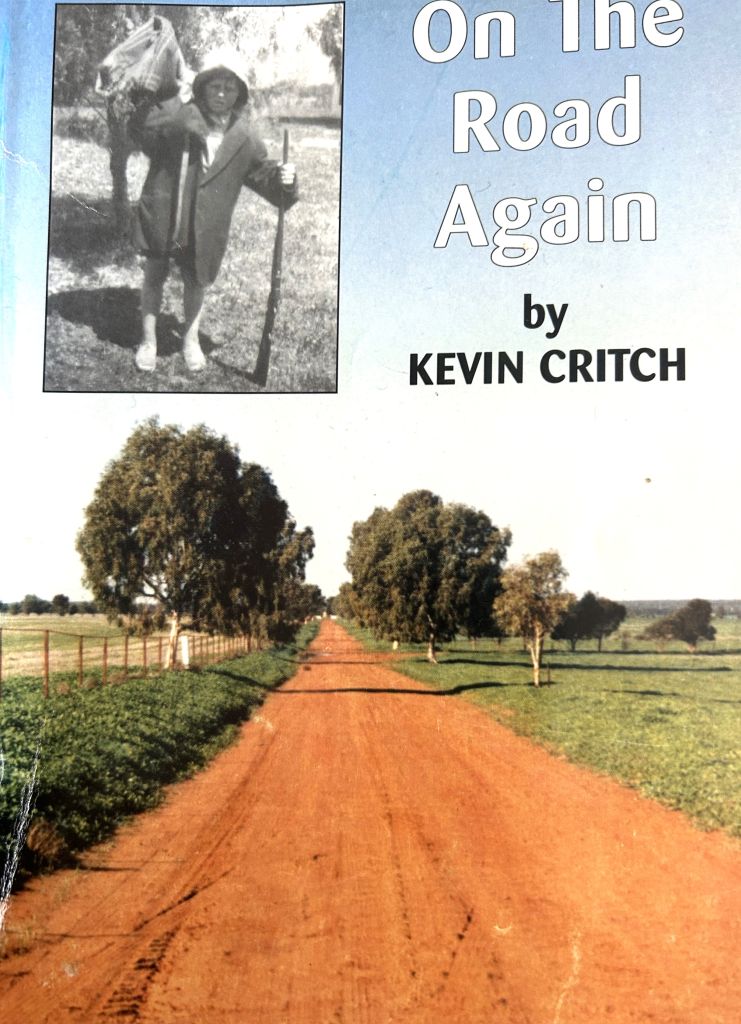
A Reincarnation
Unlike Fry, from this point and through the next 25 years, Leo’s life in the Mullewa district seemingly, clouded over. This strange void in information included the lives of his wife and children, and how they all lived and interreacted in the Mullewa district. This gap in family history has always been more than a little mystifying for his descending family line particularly but especially for family members who have resided, in that very space in the succeeding years! What is even more mystifying is how virtually nothing appears on any public record, that even mentions by name or notion, that of his wife and kids?
This gap seems to coincide with the time he purposefully took an active interest at Tenindewa in 1904, through to 1929 when he moved to the now nonexistent siding, Winchester, North of Three Springs on the old Midland Line.
Thus, from a Tenindewa history perspective there remained no traceable Critch connection for at least twenty odd years until one of his two surviving sons in Kevin Critch, chanced on the place in 1951.
This “geo-coincidence” as it might be termed, is also mentioned in “On the Road Again”.
Kevin, the first born of Leo’s three sons, explains, in that short story, it was to his absolute amazement in when in 1953, some 3 years after he embarked upon his own foray into farming at Tenindewa in 1950, that he discovered he was farming on some of the very land his father had walked off (forfeited) less than 20 years previous. Indeed, this reconnection was, a one in a thousand twist of fate.
In reality however, though it was not until many years later it became know that Leo’s name was still associated with Grazing Lease 5466 right through to 1937.
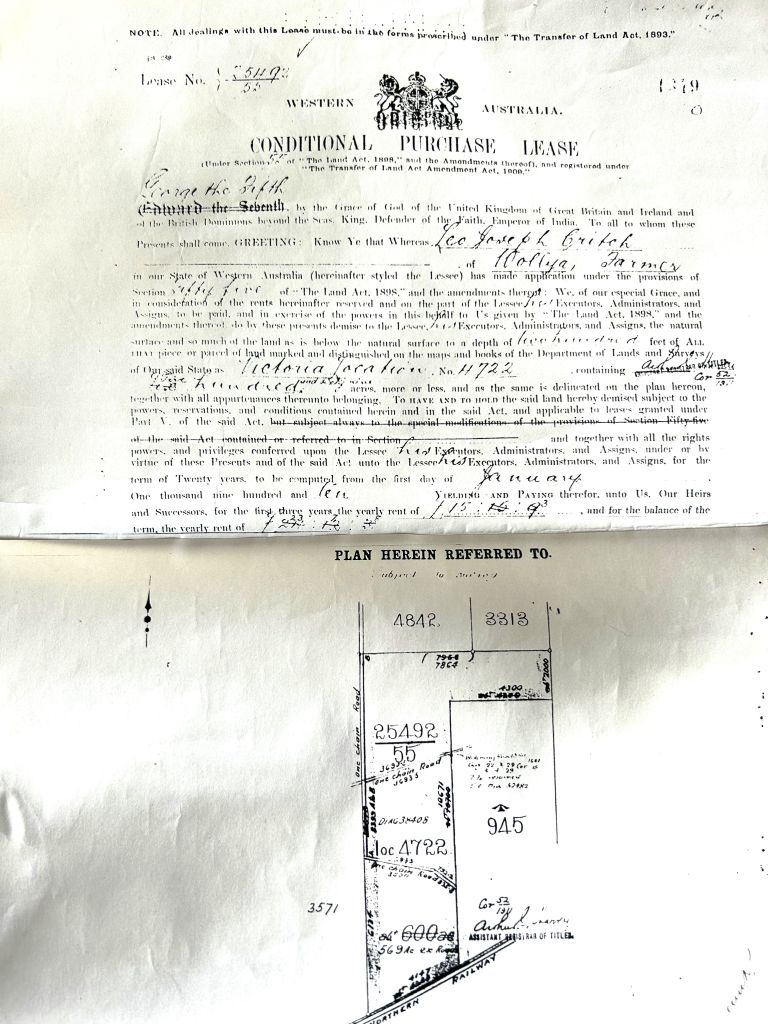
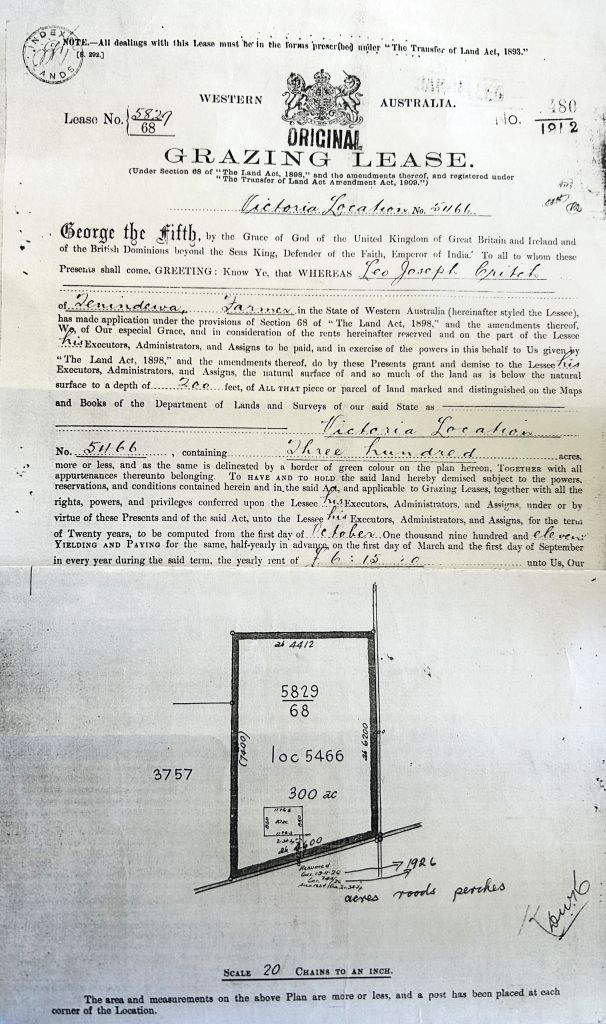
Note: It is interesting to note that in the Geraldton Guardian and Express in March 1940 the report on the mining claim on 5466.
Manganese at Tenindewa – Sitting at the Wardens Court, at the Geraldton Courthouse this morning the resident magistrate (Mr. K. Dougal) listened to evidence in connection with the application of Charles John Stafford, of Tenindewa, for a prospecting area on his own property. Stafford gave evidence of having complied with the requirements of the mining act to be given the necessary rights over the land, which consisted of 48 acres on his Victoria Location 5466 [see small, boxed area on above right map] and was held under Crown lease. He proposed mining for manganese on the property. The clerk of courts (Mr. Alan B. Rutherford) notified the Court that an application by Mr. J. U. Sleeman for the same lease had been withdrawn and Mr. Dougal informed the applicant that he would submit his recommendation in respect to the matter to the Mines Department,
The term “walked off” (as above) possibly does not mean much to the modern reader but in its time, these “such events” had heart wrenching connotations. Leo (and his children), and so many thousands of “settlers” like them, right throughout Australia, had to literally walk off properties they had spent half a lifetime slaving to create, in that unprecedented economic period we now refer to as the “Great Depression.”
To shine a more concise light on the depravations of that time, following is a most pertinent article written in The Weekend Australian by renowned Australian “demographer” Bernard Salt (August 2023).
Every week there seems to be a contribution about the generational divide. e.g. “Our generation had it toughest” is a popular theme. I wonder what drives such thinking. Every generation has had its hardships. But none had it tougher the generation that built modern Australia- those born in the 1890’s. In their twenties, and with some still in their teens, many signed up for World War 1. More than 60,000 men out of a population of five million died in the name of the British Empire. Many who lived through the war, and the subsequent Spanish Flu pandemic, had to deal with the quiet hell of what we would now call Post-Traumatic Stress Disorder. But they survived (albeit some barely), they married and had children in the 1920s thinking no doubt, that the worst of times was over.
Not so. The Great Depression arrived in the 1930’s when so many had young children, and unemployment peaked above 30 percent. But again, they survived only to make it through to the 1940’s when World War 2 took their sons.
After the war, and by then well into their 50’s, the children of the pre-Federation era would have experienced moments of joy as their (many) grandchildren, the Baby Boomers, arrived. But a long retirement was not for this generation because their life expectancy was less than 65. Often, they died at work.
Note:
In as much as Leo fits exactly into most of the above, and especially him being born in the 1890s, he never saw active service in World War one. However, one of his siblings, namely William or Will as he was universally known, was not only a veteran of that war, but was very possibly another silent sufferer of PTSD given the derelict way he lived post war, and especially the stupendous way he lived his final years and eventually, in the way he died.
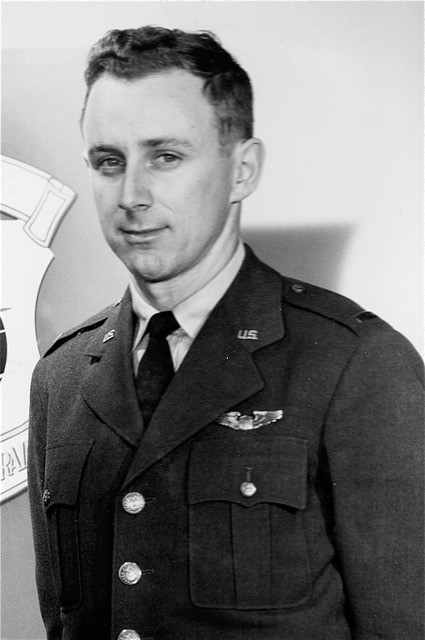
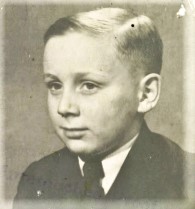

A striking resemblance (6 generations apart)
Geraldton Express
Local and General
June 22nd, 1917
William Henry Critch a Geraldton lad, and second son of Mr. Francis Henry Critch, manager of the “Express” Co., in writing to his parents, states that he was expecting to leave again for the West Front at about the end of this month.
Young Critch [sic] was formerly in the 13th King’s Liverpool Regiment and served in the Flanders front trenches for six months, when he got a sergeant’s stripes. Later on, he was recommended (with several other non-commissioned officers) by the Brigadier of the division in which he was serving to go in for a commission. He has now been in training, over six months in the Gailes Military Depot, in Ayrshire, Scotland and as has been mentioned, is again leaving for the scene of action, with an officer’s cap. His old Geraldton friends will wish him the best of luck, further promotion, and a safe. and speedy return to the sunny land of his birth.
When the war was over, he was repatriated home. While being treated for a heart condition at the veteran’s hospital in Perth, he met Adeline Roche (Addie) (1890-1947). Adeline’s family were from Bourke in NSW and Adeline had left an order of Nursing Nun’s in Sydney a year short of being professed and moved to WA to work as a nursing aide. Will and Addie were married at St Joseph’s Church Subiaco in 1919.
In 1920 Will, with his bride, left Australia once again
West Australian
Wednesday 16th May
1923
A Vancouver paper reports the appointment of Mr. William Henry Critch as Spanish Vice-Consul. This step is regarded as a recognition of Canada’s expanding trade, especially in regard to the shipping of wheat. Other exports, it is intimated will include cattle, hides, fabrics, canned foodstuffs, soap, tallow and such machinery’ and other mechanical goods’ that cannot be obtained to advantage in Great Britain.
Mr. Critch believes that lumber for use as railway ties in Morocco will form another export.
Mr. Critch’s appointment embraces the prairie provinces and the Spanish Vice Consulate in Vancouver will be the only one west of Montreal. Mr. Critch, who is a ship broker is an Australian by birth and has a number of relatives in this State. He has been resident in Vancouver for the past two years and speaks fluent Spanish.
However, the aftereffects of the war, a wandering spirt and disconnection from his family resulted in life becoming increasingly difficult for Adeline and the children and during the depression the family moved back to Australia and settled in Sydney. Will’s drinking and inability to provide continued to impact on the family and eventually became too much for Adeline, and they separated. Soon after this Will was admitted to the North Sydney Army Repatriation Hospital due to his heart condition and died there aged 57. Five years later, Adeline died, leaving Mary and Bill (aged 13), to all intents and purposes, alone in the world. After several difficult years in Australia, they made their lives back in America.
Scrolling Back
But focusing again on Leo, we painstakingly trace back via those afore mentioned “Tenindewa Notes” in Trove to the beginnings of his painful misadventure and search out the blandest of snippets in what might be called a “Hanzal and Gretel” search to hopefully discover just what transpired with him in the intervening years.
For example, the following article appeared in the Geraldton Express in December 1904.
So, given that Leo would have only been about 14 years old at the time of this “declaration” (see below) by obvious deduction Francis Henry his father, and or his elder brothers (perhaps the family generally) must have been watching this space with some interest and ambition and possibly one or more family members, fronted with the initial down-payment and or an “Expression of Interest” that got Leo started?
The “repurchase” being referred to in the following article is part of an amazing story in terms of WA’s agricultural beginnings. It essentially refers to a period when the WA Government reacquired land it had previously ceded to the Midland Railway Company as a means of payment to them (The Midland Railway Company) for building the rail and its associated infrastructure from the then town of Midland (north of Perth) to the village of Walkaway (south of Geraldton) in the late 1890s. (opened 1894)
The article reads.
“The repurchase of Wolya Estate (Tenindewa) containing 3,514 acres, is subdivided into 5 lots, which are now open for selection under the Repurchased Estate Act. The Lots have a frontage to the railway at Kockatea Gully [i.e. Tenindewa] and as prices range from 4 shillings and sixpence to five shillings an acre [about $1.25 per hectare] they ought to be snapped up quickly”
Geraldton Express 1904
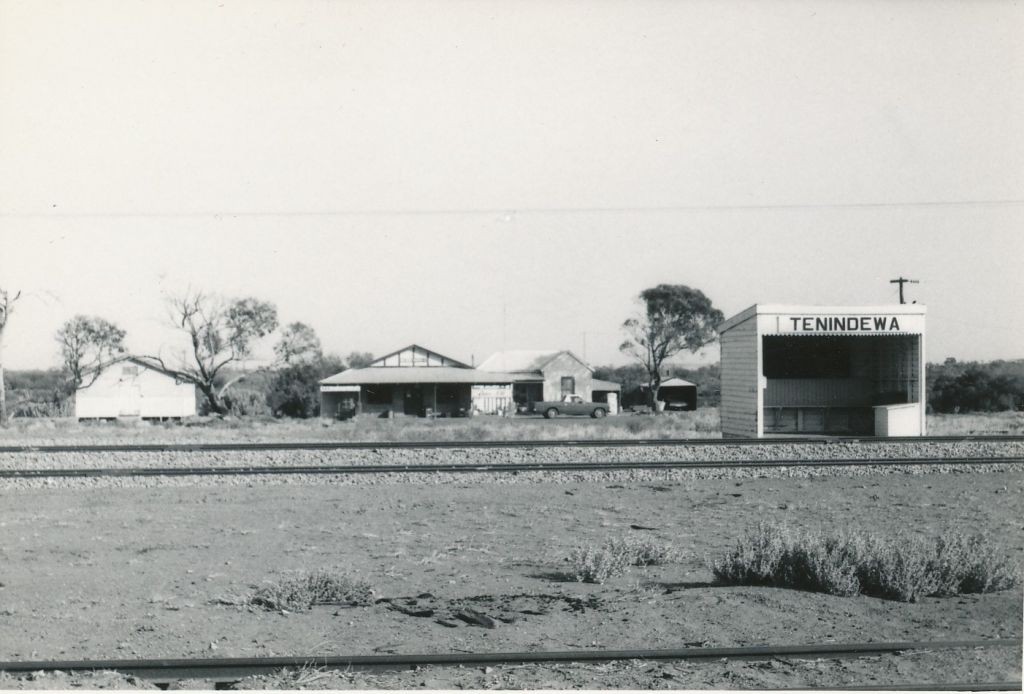

The next innocuous but convenient newspaper snippet dated 29th October 1913 gives us a fix on Leo’s progress in agriculture. He (Leo) would have been 23 years of age at this stage.
It reads
“Leo Critch, (who takes to farming like a pressman to Liqueur Cream) has a good-looking paddock of wheat…...”
And again, another simple article in the Geraldton Express in 1915…..he, Leo, is now 25 years on this earth. Nothing earthshattering in this article either, but another crumb on the path as we retrospectively plot his journey and monitor his progress
August 27th, 1915
Local and General (Geraldton Express)
Our harvest prospects–Judging by a sample of this season’s wheat yield (now on show at this office) which came to hand a day or two ago (August 20th 1915) from the farm of Mr. L. J. Critch, of Tenindewa. etc…………..
……….. it continues……At the Geraldton Agricultural Show in 1913, first and second prizes for the best two sheaves were obtained also from a Mr. Leo. Joseph. Critch and a Mr. Norman. Fry respectively, both from samples grown at Tenindewa.
By 1915 Leo has turned 25 and we note below he has got himself involved with the Farmers and Settlers Association
October 10th,1915
An article in the Sunday Times
“A meeting of farmers held at Tenindewa on the 26th instant decided to form a branch of the farmers and settlers Association, to be known as the Tenindewa, Bindu and Wandana Branch.
Mr. E C Clarke was president, Mr. W. Brenkley vice president; committee Messrs. Brand, Griffiths, and Valentine; treasurer Mr. L Critch and secretary, Mr. W H Stokes. Thirteen members were enrolled at the meeting, each member undertaking to enroll 3 new members. Therefore, a largely increased membership is confidently expected at no distant date. It was decided to hold the next meeting at Bindu, the following at Valentine’s Tank, and to complete the round by holding the next at Tenindewa. A discussion was introduced re. the loyalty of members to their association, and it was decided that members would put as much of their business as possible with the Westralian Farmers Ltd. [for] which [that] trading concern had been started by the Farmers and Settlers Association. The action of a prominent member of the association [who was] acting in the capacity of insurance agent for a rival firm was well, ……..not too favorably commented upon–W. H. Stokes, hon sec, T.B and W. Branch, F and S.A”. [sic]
A convenient historic marker for the whereabouts all the children of Francis Henry and Annie including Leo was captured in the list of family attendees in the public eulogy published in the Geraldton Express on the 7th of April 1921 as a consequence of the passing of his mother Annie.
In reads in part…………..
“……..Mr. Frank J. Critch, manager of Mr. Charles Horsmann’s Geraldton business etc….”
And it continues…………
“The other sons are Messrs. W. H. Critch (Sydney) and Tom, Leo, and Charlie, who reside in the district etc…“
What becomes obvious from these couple of lines is, Leo was still local at that time and maybe even Tom and Charlie were still active in Tenindewa as well, but notwithstanding after a long public silence and much searching, we are now all the way into the year 1928, with Leo’s age being by now 38 and we stumble on several newspaper pieces that give assistance to, not only reassembling Leo Critch’s life’s journey but, simultaneously go quite a way to unravelling our other perplexing puzzle…..the identity of this perineal Tenindewa reporter known as “Our Own Correspondent”?
Conveniently, an almost in support of our frustrations, we unearth a letter to the editor of the “Express” penned in 1895, giving him (the editor) a piece of his mind over the use of nom-de-plumes.
Geraldton Express and Murchison Goldfield News
16th August 1895
OUR MULLEWA CORRESPONDENTSir,–I wish you would be so kind as to ask your Mullewa correspondent, whoever he may be, to mind his own business, and not to publish his opinions as to what business townsfolk are going into, when there is no foundation for it.
I am not at present going into any business in Mullewa, therefore do not write to mislead the public.
I am etc.
Thos. Timms
Mullewa
As we burn the midnight oil on our way through this task, we might be excused for mockingly imploring, “if only the dead could speak” as it just has to be assumed the local folk at the time who read these multitude of newspaper articles, would have surely fathomed out who these various “correspondents” really were?
With the option of connecting with the afterlife not being available to us we defer and discover that patience and perseverance are virtues, and they might just yet deliver. As we peruse these incidental newspaper articles, unearthed 100 plus years after the event and despite the best efforts of those reporters to remain “incognito”, a mini-series of gaffes occur which expose at least one? These gaffes, the writer believes, deliver the transparency and results in the lifting of the “cover” used by this, “Our Own Correspondent”?
The first of these is in an extract from an article written in the Geraldton Guardian.
Tenindewa Notes from “Our Own Correspondent”
July 28th, 1928,
Note in this article that, “Our own Correspondent”, probably for the first time in his 20-year literary career, fleetingly writes of himself?
Rain galore, and the townspeople are all smiling, because there is a chance of cocky having plenty of spending silver in a few months. The crops around Tenindewa never looked better during the past 19 years to my knowledge, and Tenindewa Siding expects to shift 60,000 bags [5000 tonne] of wheat this coming harvest. Many new settlers have fair sized areas of wheat in and there is not now one vacant block of ground between Tenindewa and the Greenough River (17 miles distant) [i.e.28 kilometers].
And soon afterwards a second is like it when on the 1st of November 1928 “Our own Correspondent” wittingly or unwittingly reconfirms on the period of time that he has existed in Tenindewa?
“I am a pioneer farmer on this area [sic] and have learned a little during the last 20 years, and I have much more to learn.”
Alleluia!!
In as much as our mission to this point is far from accomplished, at last, and at least, we now know this person, aka “Our Own Correspondent”, is a farmer, and we also now know for sure he has been in Tenindewa for 20 years!!!!!
Another Pennies Drop
The frustration of not being able to get any real traction on Leo’s life despite the reams of articles titled “Tenindewa Notes” in the Geraldton Express and authored mostly by “Our Own Correspondent” and by other “Correspondents” has been previously mentioned.
Also previously mentioned is, why on earth did reporters, in the employ of a country newspaper use pseudonyms to report about this “dot on the map”, known as Tenindewa? Is this a routine perhaps something that would only be understood in the upper circles of the newspaper world?
Either way our attempted unravelling of this puzzle is aided enormously by the fact that there was but a very small pool of likely persons to pick from in the Tenindewa district and……the odds would suggest that, even though we are now one hundred years post the event, it should still be relatively easy to, by process of elimination, unmask this correspondent via a studious examination of that list of residents?
But again, at last and at least we have discovered he is local, and he is a farmer. We have also read that he has spent 20 years in the place, and it is obvious, judging from his articles that he is reasonably articulate?
Supporting the above, the reader will recall that Doreen (Butler) Lindsey in her book “To Sow the Barley” compiled a comprehensive “roll of residents” (some 200 in number) dating from 1905 through to 1985 that had lived, worked, wed, and died at Tenindewa.
The reader might also recall that this “roll of residents” was accumulated in egalitarian style and constructed without fear nor favour of rank, colour or creed so therefore an individual who had the literary skills in those days to be reporting continuously and regularly on Tenindewa and its surrounds and for over twenty years should be, a reasonably obvious standout?
A Shakey Start!
But now, we search for more clues and focus even further back to midyear 1911 and discover “Our Own Correspondent” in print and in what appears to be his very first article on 16th June of that year. Remarkably, he appears to have manufactured for himself an almost fatal launch to this fledgling newspaper career. Bewilderingly, he launches into this new role by immediately taking verbal umbrage as to some statements in an article in a “Sunday Times” newspaper dated, October 1910 and does so by furiously rebuking those statements? As a consequence, he instantly finds himself embroiled in an ongoing and serious war of words with a Mr. Norman Fry, a former Headmaster, the current Road Board Chairman but most pertinently, a regarded and successful settler based right there at Tenindewa Town!
In as much as this “war of words” can justly be declared bazar and undisciplined, our intrepid “fledgling journalist” soldiers on unapologetically and blindly blunders deeper into a hometown hornet’s nest! However, as offkey as this all might sound, out of it providence provides!
This verbal free-for-all, allows us to discover that this Mr. Fry for one, has some valuable information. Firstly, encased in his rebuking-reply, he states that he surely knows exactly who this “Our Own Correspondent” is, and secondly, dare it be said, for good or for bad he also makes it clear that he surely knows exactly where “Our Own Correspondent” lives!!
As is the way when one loses one’s composure and, similarly on this occasion, in the heat of this verbal battle, “Our Own Correspondent” also drops his guard and in so doing, he drops a couple of handy hints for any interested spectator hoping to get a peek behind the veneer of this, newspaperman’s pseudo-name.
Crossing the Tees and Spotting the Lies………You be the judge.
The writer at this point unconventionally changes tack and throws caution to the wind and puts you the reader in the driver’s seat in this exercise of discovery!
The initial request is that the reader becomes the judge and deliberates on this accompanying literary battle which the writer believes delivers the vital clues. A second request is to adjudicate on the question, “can it be, that these articles constitute the “Rosetta Stone moment” in the unmasking of “Our Own Correspondent”?“
So now together, we venture forward and scrutinize these controversial articles and
they read as follows.
October 9, 1910
Sunday Times
[No correspondent nominated but perceivably an Industry Assistance Board (I.A.B) propagandist?]
“Mr. Fry presents another example of what can be done by hard work and perseverance. With a capital of less than 100 pounds [$200.00], he selected 619 acres of land at Wollya, 55 miles east from Geraldton [82 kilometres] a little more than two years ago, and immediately proceeded to work to get the quickest possible return. His family consisted of five, himself and wife and three children and there was no time to be lost.
The country was typical of the wheat lands, consisting of light sandy loam, timbered with Salmon Gum, gimlet and jam, and ringbarking was engaged in at once, this being varied by the building of a two roomed iron house, and the preparation of a homestead garden.
Helped by the Agricultural Bank his position last season, 18 months after starting, was that he had all his land fenced with 6.5 miles [10 kilometer] of good wire fencing, 200 acres [80 hectares] cleared and cropped, and 210 acres [90 hectares] ringbarked. From the 200 acres he stripped 184 acres for an average of 20 bushels per acre [1.3 tonne per hectare] and cut the remaining 16 acres for a return of 20 tons of hay.
This season there are 300 acres under crop, all looking well and a further area has been ringbarked and cleared ready for the coming season.
He has bought all the machinery he requires, some of which is fully paid for, and the whole is well housed in substantial sheds”.
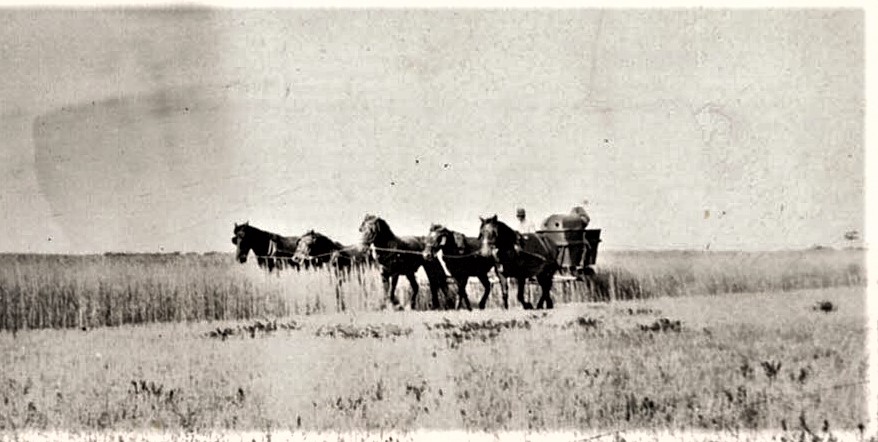
*Spoiler alert…. the decorum of the conversation deteriorates markedly…….. almost from this point!!
“Our own Correspondent’s” rebuke reads.
Geraldton Express
June 16th, 1911.
Tenindewa Talk (From Our Own Correspondent)
Seeding operations are just completed, and a fall of rain would be very welcome as the season has been unusually dry up to the present. In fact, we have only had two inches of rain [50 mm] in the last 9 months, and some settlers are compelled to cart water. The early sown crops are looking nice, although the season, slow in starting, favours a late sown crop. It is the experience of the writer, extending over 13 years, that the season slow in starting usually continues favourably, rains falling when most needed, namely in the months of September and October, although no sowing should be attempted after the 24th of May (the date mentioned by Mr. Norman Fry at the last Producers Conference) and particularly after heavy rain. Some three years ago this gentleman cropped 80 acres [32 hectares]. The 20 acres sown in the dry state cut one ton per acre [2.5 tonne per hectare] the balance sown after heavy rain, cut only 6 hundredweight per acre…..a difference of 14 hundredweight.
[20 cwt (hundredweight) to the ton].
It’s a great pity that great disappointment and misery may be indirectly caused by giving misleading and highly coloured statements to persons who, they well know, will have them printed, about what can be done with little capital on the land. Of course, it is a cheap advertisement for the person supplying the information. The pressman knows no better, and being anxious for news of that kind, is imposed upon. I read an account quoted by Mr. Catton Grasby in the “Western Mail” of what a settler did here at Tenindewa with 100 pounds [$200.00]. Mr. Grasby either had his leg pulled or he was imposed upon, because the par was absolutely incorrect in details and rottenly misleading in general. I consider, as an experienced battling settler, that such persons should be dealt with by the law. Common manly principals do not always prevail. Success is often due to unusually good luck, and the efforts of genuine settlers are frequently belittled by such comparisons”.
- For the readers information; Catton Grasby was a renowned Agricultural Journalist, Author, and Educator in the early 1900s)
But Mr. Fry explodes with this reply!
June 23rd, 1911
Tenindewa Talk (Letter to the Editor)
“A Remonstrance”.
Sir, During the last few weeks several editions of scurrilous and vindictive diatribe, have appeared in the columns of the “Express” under the heading of the “Tenindewa Talk”. Sometimes by “Our Own Correspondent” and at other times under another nom-de-plume, which ostensibly represent one and the same persons. I would suggest that in future your correspondent subscribe himself as “The Skunk” as it seems impossible for him to detail the items of interest without pouring out a volume of his slimly spleen over one or other of his neighbours, one who has made great progress at his calling, than he himself has. He evidently imagines that the high road to success and fame lies in backbiting his neighbours and endeavouring to injure them in the eyes of the public through them, (i.e. the medium of your columns). No doubt it is gratifying to the author to see his drivel come out in print, and at the same time it does no harm, as anyone, who knows the “parties” concerned can readily detect the germ of envy lurking between every line of this invective harangue. In your issue of June, the 16th he refers to some information that was published in the “Western Mail” by Mr. Catton Grasbey, of what a settler did here at Tenindewa with a 100-pound Agricultural Advance, [$200.00] and he describes the information as being “absolutely incorrect in detail and rottenly misleading in general”. Well Mr. Editor, I supplied that information to Mr. Grasbey and, I am the settler referred to, and further I vouch for the accuracy of that information. I challenge your correspondent to reveal his identity or to show any details of that statement that was incorrect or misleading. If he will, for an instant, remove those blinkers of jealousy and hate from his stilled senses, he will readily see that after all, I did nothing wonderful, but merely exercised a little foresight, energy and intellect--three faculties your own correspondent has never been endowed—Yours etc.
Norman Fry “Kaburnie”
The debate hits fever-pitch! See a buffering article (From our own Correspondent)
July 3rd,1911.
Tenindewa Notes
Since last writing, we have had 50 points of rain [12.5 mm] which of course was very welcome as many crops were feeling the effects of the dry weather, while others never looked better at this time of the year, notably those of Messes Dunkin, Valentine and Critch Brothers, whose crop is about 18 inches [46 cms] high. Messes Tullock and Oldham, some new settlers have a nice field of 150 acres [60 hectares] under wheat. These settlers had the good fortune to strike fresh water on their holding at 17 feet [5 meters]. It was located by the mysterious divining rod. It would be a great boon to settlers if more proved water existed, as this difficulty has been a great drawback to the district.
The local Progress Association is doing good work. Through their efforts Tenindewa is to have a telephone, a special grant for roads has been obtained, and a townsite is to be surveyed as soon as a site is decided upon. This body has been asked to choose from three suggested by the Lands Department. One is a quagmire the other is a sand-drift and the third is proposal to resume a splendid piece of land for this purpose. The owner, I believe in public spirit is not opposed to the resumption, and the taking of the fencing, and a bit of clearing, and a small iron house, at the owner’s valuation. The Government would not be asked for more than 30 pounds [$60.00], an amount two town blocks would realize, because Tenindewa will be a distributing center of some importance with 120,000 acres [30,000 hectares] of good agricultural land and being the junction of 5 main roads.
It is sincerely to be hoped that Mr. H J Stafford, a local settler, will decide to stand as a candidate in the interests of the people’s party at the coming elections. The average farmer is a worker and should vote with the Labour Party every time. And should the Labour Party be asked to form Ministry after the elections, Mr. Stafford’s 38 years railway experience would go a long way in making him a first-class Minister for Railways. Reforms are badly needed in this department. For instance, hundreds of “cords’ of firewood lay around this center, while at least one hundred empties [rail trucks] pass weekly to Geraldton, which is a town threatened with a firewood famine. It’s not the freight that prevents settlers from selling wood at a profit, but silly, unreasonable loading regulations to the disadvantage of all concerned.
In my last notes I referred to a “par” in the Western Mail merely to illustrate a point of public concern, because I honestly think the bright side of the settlers’ lot is too often held up as an example, while the ordinary state of affairs is hardly mentioned. I stated facts which still remain [facts] and I defy Mr. Fry to substantiate his insinuations that they were made use of for any other than a good purpose. There was no occasion for him to trot out a lot of meaningless second-hand rubbish in his efforts to live up to his reputation at my expense. Even if the par I referred to was true it was still misleading. This season he got his clearing done at 12 shilling and sixpence per acre. Now anybody in a position to judge knows clearing to be worth 30 shillings per acre in Tenindewa. The Agricultural Bank allows one pound per acre as a rule [$5.00 per hectare], but one settler was only allowed 13 shillings and 4 pence per acre [$3.50 per hectare]. It is impossible to get work done at trustees’ valuation without *sweating labour, and that accounts for so many contactors failing. I know there are instances of farmers doing remarkably well with little capital, but they had good plant and of course can get unlimited credit. It was possible a year or two ago, on account of a glut in the labour market to *sweat the worker and show a fair profit on an Agricultural Bank loan, but it is not a desirable basis of success. Mr. Fry does not miss the opportunity to boast that he has been richly endowed by nature. Intellect is a gift, and he should not dispose others who have been less fortunate in this direction, but [they] perhaps have some good points he himself does not possess. He should also remember that the year he did so well [was] the year rainfall was 9 inches above average [250mm above average] and average is about twelve and a half inches [350 mm]. Now had it been 9 inches below [average] it would have taken a lot of energy, intellect, and foresight to balance the difference.
While the former two are gifts, more or less, the last, I think is acquired and it is the very one that Mr. Fry fails in, because only last year he shipped wheat to Europe, and it netted 2 shillings and 10 pence per bag while local buyers were offering 1 shilling per bushel. So, he cannot claim credit for special ability in this direction”.
NOTE:
*There are 3 bushels in a bag.
*Sweated in this context means “taking unfair economic advantage of”
Observations of Interest.
We now know for sure that” “Our Own Correspondent” is, in his own opinion anyway, an experienced battling settler (and most probably one of the original seven) and we discover that this, “The Skunk” as Fry calls him is indeed Fry’s neighbour? Mr. Fry then labels “Our Own Correspondent” with a plural tag referring to him as “the parties concerned”? Also, Mr. Fry’s words from that same article read “sometimes by “Our Own Correspondent” and at times by another nom-de-plume, which ostensibly represents one and the same persons”. (plural again!)
In terms of discovering exactly who is who in this search, Fry’s words create a very interesting statement, but unfortunately it is very open-ended? Fry does not suggest that a single correspondent is using all of the “nom-de-plumes” but as part of his heated retort he includes the words ” everyone knows the parties concerned”?
As we inch forward with our investigation, what can positively be reveled is, who Mr. Frys immediate neighbors were in that year of 1911?
Written records conveniently show that Alexander Knox Rumble was one (1906-1920) Arthur Meadowcroft another (1905-1920) Mr. Robert Oldham and a Mr. Tullock (partners) (1910-1951) and certainly the Critch brothers were his neighbours as well. (1905-1930)
Note; Norman Fry himself left the district in 1919
To give some geographical perspective to the reader, all of these settlers, and including Mr. Fry himself, collectively surrounded and virtually all “touched” the Tenindewa settlement.
That concluded we, through an immediate “process of elimination” can rule out the Rumbles and Meadowcroft’s, as both those families were gone from the district by 1920, and we know “Our Own Correspondent” was still reporting for 10 years after that, so he is not part of one of those families! And conversely Tullock and Oldham had just arrived thus, they too are eliminated as the reader will recall that “Our Own Correspondent” wrote of Tullock and Oldham’s arrival and simultaneously wrote of his 10-year precedence to them.
3rd of July 1911.
“Messes Tullock and Oldham, some new settlers have a nice field of 150 acres [60 hectares] under wheat“
1st November 1928
“I am a pioneer farmer on [sic] this area and have learned a little during the last 20 years, and I have much more to learn.”
This leaves us with just one possibility and that is, the correspondent and the neighbours that were engaging and enraging Mr. Fry is Leo Critch of the “Critch Bros inc.”
Clearing the Forest and the Trees
Another issue, spilling from that series of claims and counterclaims, that has touched a very raw nerve in “Our Own Correspondent” is “clearing”. The reader may need to be informed that it is the year 1910 and the land was virtually all “virgin” at Tenindewa. This terminology, though mainstream in its day, has all but gone the way of “fireman” “batsman” and “fisherman” because of the rules of current day political correctness! But, for the purpose of this exercise and by way of explanation the words “virgin land” convey that the land has not been touched in any way in terms of clearing or whatever! That is, it, the land, remains in its virgin state!
So back to the issue at hand and an inquisitive reader might justly ask why on earth would a newspaper man get so cranky about the price Mr. Fry paid for his clearing and indeed get involved with the “ethics” applied by Mr. Fry to his negotiations of this pricing?
The reader will recall that in that heated exchange “Our Own Correspondent” referred to the exact price at which Mr. Fry got his clearing done?
“This season he got his clearing done at 12 shilling and sixpence per acre. Now anybody in a position to judge knows clearing to be worth 30 shillings per acre in Tenindewa“
The immediate and resulting question for the inquisitive reader is, how would “Our Own Correspondent” have known exactly, or have been expected to roughly know, what price Mr. Fry had negotiated for this said clearing?
The most probable answer to this is that “Our Own Correspondent” was again in reality that the very individual who was contracted at those “cheap rates” and “sweated”.
Obviously, as mentioned previously, all this evidence has unfolded one hundred years plus after the event, and in an effort to persuade and give confidence to the reader the following is offered in this case.
Earlier in the story two important manuscripts were tabled highlighting the foundation years of Tenindewa. The first by Doreen (Butler) Lindsey and the other by Kathleen (Palmer) Rumble.
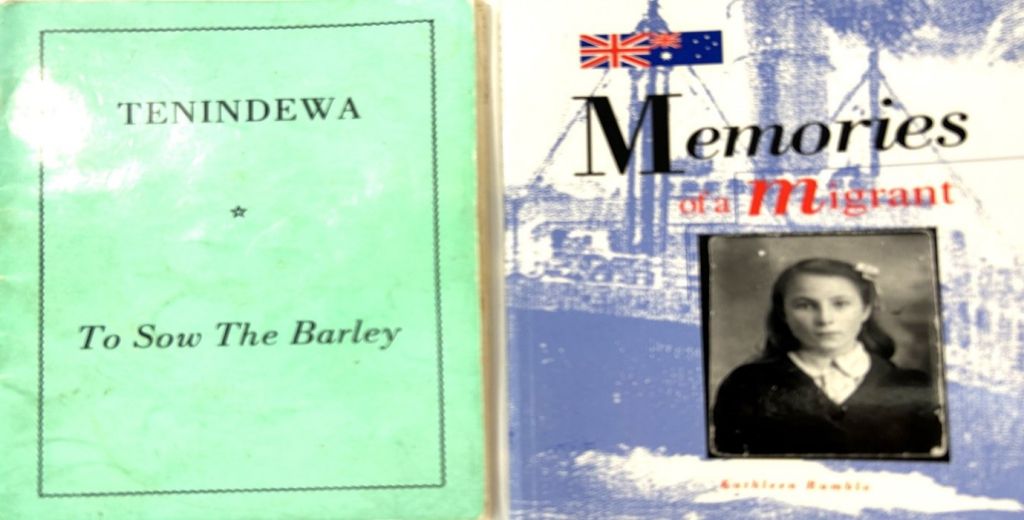
Doreen in her “roll of residents” chapter is on page 14 presents the following.
In her “Roll of Residents” and in her writings this is the only person referenced regards “clearing land”

Similarly, Kathleen on page 30 of her book “Memories of a Migrant” and under the heading of “We Survived a Cyclone” includes the following.

Kathleen, on page 18 of her Memories of a Migrant refers also to Leo Critch clearing the Bindu Dam site.
Sheer Weight of Evidence
Discovering the identity of “Our Own Correspondent” via conventional channels, e.g. “The Geraldton Guardian” itself, The State Library or the Geraldton Library had all been tried and exhausted.
At this point in the quest of finding Leo, fading enthusiasm, instinct, and intuition have all merged and magnified attention in the direction this “exchange of pleasantries” between this Mr. Fry and this “Our Own Correspondent”.
Given the above, and driven by necessity and governed by time, the plot needs to progress from speculation to prosecution.
Thus, the writer, anxious to get traction, unilaterally decrees, given the evidence presented, in all probability “Our Own Correspondent” and “Leo Critch” are one and the same person and he passionately hopes the reader will concur?
Taken the above as granted, the floodgates open and to the writer’s relief the previously unfathomable reasons as to why “Our Own Correspondent” rarely mentioned Leo Critch in his articles is clarified and simultaneously and most importantly we discover, contrary to believing that precious little information existed of Leo Critch’s twenty years at Tenindewa, we discover instead that we have in fact a valuable and historic mini-library that has been written by him in Tenindewa Notes!
So, as we attempt to condense and consolidate the story it can be reasonably assumed that that Leo Critch was, not only the person making his point on the costs and ethics of clearing Fry’s land but was in fact the very person that had physically undertaken that contract. Digging deeper, is also possible that he was venting his spleen and taking some pent-up retribution, via his newspaper article, for being possibly “sweated” in the process a year or so previous to the articles being published?
An accelerant for this firefight was possibly also on account of some accumulated tension that had developed between Mr. Fry and Leo Critch, in times and times previous? As the reader may recall, Leo had worked under Mr. Fry at Kockatea Station in his formative farming years and up to the year 1910 when both men, simultaneously but separately moved on, into farming on their own accounts. For the record Mr. Fry was 16 years Leo’s senior.
The coup d’état
This third slip, if we can call it that, is rather oblique but it is arguably the most absolute in terms of identifying of this correspondent. Again, for this following piece of evidence to have any relevance to the incidental reader it is important that this person knows, in advance, of a tragedy that is destressing Leo’s at the time of the writing of this following article.
In 1928 Leo was 8 years into marriage. His former bride, Mary Malloy a girl from West Wyalong in New South Wales, had been diagnosed, in 1926, with terminal cancer and along with their three children, had immediately, decided to return home to see out her days with family.
We find Leo Critch, now aka “Our own Correspondent”, back on his farm in Tenindewa, early on a Saturday morning in a melancholy moment and reflecting on life and its dilemmas. He writes of the “birds and the bush” and of “mother earth” and the afterlife?
Tenindewa Notes (From our own Correspondent)
July 28th, 1928.
I am sitting down writing these few notes (as usual mostly about cockie of course), I can hear the birds joyfully singing hailing the new day, after the rain. The butcher bird and the magpie are the best of singers with no charge to hear them. It is one compensation for living the wild and wooly life of the mulga. Still, there are others. For instance, seeing the new ground turned over with nice brown folds and sweet earthly scent, and then to know we shall all someday return to this good old mother soil. What could be better? I would sooner do that than play a harp all the time. I have no ear for music. If it was all birds, flowers and fields with a little Kelly thrown in, I would not mind such a heaven.
Things such as wheat crops and livestock are looking remarkably well etc. etc…..
He then continuous his article about “cockie” as per his normal posts………..
Perhaps it’s another “deliberate” clue, along with the others aforementioned, given by Leo for future readers to unlock his secret-past as a reporter? If it is deliberate however, this cryptic clue, is one that only a most engaged family member would likely detect and especially progressive generations?
For the reader’s benefit, knowing it was just four months prior to this article going to print that Leo’s wife Mary (May) had passed away in West Wyalong, NSW is significant in terms of comprehending this off-key manner of writing. But the punch line employed here included the most “embedded and cryptic twist” which was entwined in the words that “Leo’s mother’s maiden name was “Kelly“?
Adding emphasis to this line of inquiry, and recalling May Critch had passed away in March 1928, it must be noted when checked against the dates of articles posted on “Tenindewa Notes” in that period we discover that “Our Own Correspondent” did not report from February the 16th 1928 until June the 9th 1928.
This four-month gap in his reporting would concur with the thinking that he, on the advice of doctors, was called back east in probably mid-February and then, after May’s passing in March, gathered their children together and repatriated them back to WA, settled them, and was back reporting by the 9th of June 1928?

Reflecting
As mentioned earlier, for many reasons there has been no effort made to post a story on this pioneer earlier, as the Critch mob generally seemed quite a disjointed and unconnected lot, unlike most of the folk who featured on the Tenindewa site, and thus, there appeared to be very little accessible history and family folklore to accumulate into a worthwhile piece of reading. Indeed, at the time of the launching of the Tenindewa website in 2014, which coincided with Tenindewa’s Centenary Celebrations which was celebrated by many of the past inhabitants revisiting, there seemed to be very few at that event, who remembered very much at all about Leo Critch or of his family even being at Tenindewa?
However, two things have surfaced that have alleviated that slightly negative and subjective assessment of the Critch mob are, in the first instance, the emergence of a member of this scattered Critch mob in a Mr. Bill Critch, Leo’s nephew, who materialized in WA in the 1980s. Bill from the United States and a US citizen, was on a quest to gather information regarding the Critch Family Tree in an endeavor to put it into some sort of order and, as he mirthfully suggested, hopefully discover some previously unknown celebratory Critches along the way. Bill’s father, William, one of Leo’s four brothers, though born in Geraldton, was the ultimate of global wanderers, who spent much of his life in North America. This fact finding American in Bill Critch, son of “Will” as previously mentioned, had quite an illustrious working life, serving in the American Forces as a pilot and flying passenger jets for Boeing just by way of example. Late in his career he was in a most senior position with Boeing as a 767 “flight simulator” instructor in Seattle.
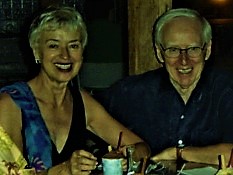
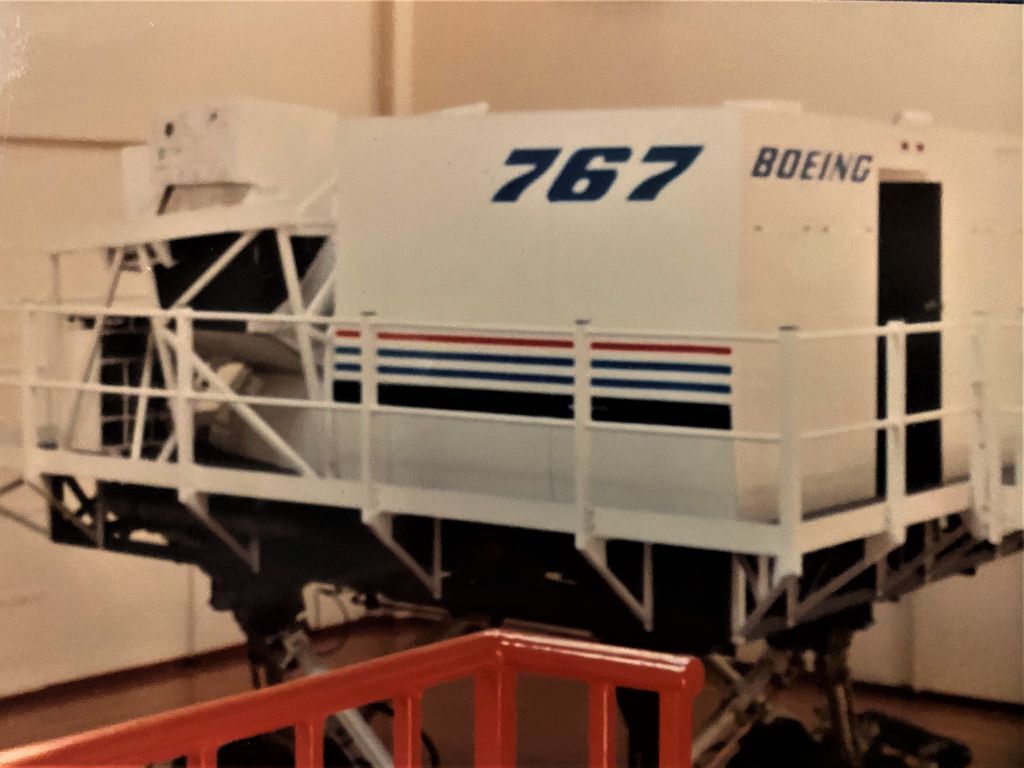
As is our nature as tribal homo sapiens, Bill became determined to accumulate and establish Critch history and especially trace the family’s geneses back into Europe. Bill as he went about this labour of love became well known and well respected among his Western Australian relatives. Conveniently he was very well resourced intellectually and monetarily and, most importantly from the aspect of time, was retired. Bill and his wife Marlene travelled the world and particularly the United Kingdom and did many hours and hard yards in municipal libraries and purveying church parish records and alleluia they eventually managed to strike luck in Dover England.
Sadly though, for the Critch clan but especially for Bill himself, that was about as good as it got, as in as much as he established conclusively that Dover was the launching place of the Australian and the American Critches. His research proved there was absolute evidence of his ancestors’ existence and of their activities there, but alas, as he tried to dig deeper and push back further into the past, the resulting search was a shattering washout?
His considered conclusion was that there has perhaps been a name change some 100 years previous to the beginning of Australian expedition and the solving of that genealogical mystery and the discovering of our, very distant past, remains, a work in progress for members of a subsequent generation.
Though not directly connected to this story, ironically and tantalizingly and somewhat distractingly, what Bill Critch did discover or stumble upon, was an English gentleman by the name of John Critch who was coincidently on an identical mission but frustratingly, not only did John have a similar semi-washout result to Bill, in as much as he similarly could not trace his family back from Dover either, they frustratingly (the two of them) could not, despite the best of desperate endeavors, even connect these two Critch families. What Bill did do inadvertently however was push the “genealogical interest button” amongst some of his Australian relatives and thus the work that he started still continues.
The second and most rewarding aspect of this renewed interest to date, has flowed onto the knowledge that the unknown author responsible for those dozens and dozens of articles written by this “Our Own Correspondent” under the heading of “Tenindewa Notes” is in fact Leo Critch.
As time goes by and “more pennies drop”, the possibly is that the unmasking of the individuals behind the other Tenindewa Notes pseudonyms such as, “Our Correspondent” and “An Occasional Correspondent” will occur?
In addition, this litany of articles which spans more than two decades, not only unwinds and highlights for us the many of the issues that were the growing pains of a tiny country community in early 1900 but it more especially unwinds for us the very thoughts, aspirations and grievances of those various authors.
Further and Final Evidence
In a final wrapping up of the aforementioned conclusions a more recently discovered piece of evidence linking Leo to these newspaper articles is to be found in an extensive 500-page book, written by Leo’s second cousin in that of a lady named Moya Moore. (Moya Morris was her married name) This in-depth book titled “Hearts to Dare” traces her family’s ancestors, especially the Earls, and their activities in and around the Mid-West from the beginnings of the Colony and thus it includes the Kelly’s’ and then flowing from that it naturally includes Leo’s mother who was one of those Kelly’s’. Tucked away, towards the end of this book Moya goes into the detail of what her second cousin in Leo Critch got up to in his short life and she writes on page 489…*
“About 1911 Leo settled on the farm at Tenindewa, about 80 kilometers from Geraldton on the Mullewa Line. Charlie [Leo’s brother] often worked there with him before settling on the Goldfields to seek his fortune. They sometimes contributed news of Tenindewa to the “Express” about activities and people in that area including those of Robert and Tom Moore of Indarra.” [Robert and Tom were Moya’s uncle and her father]
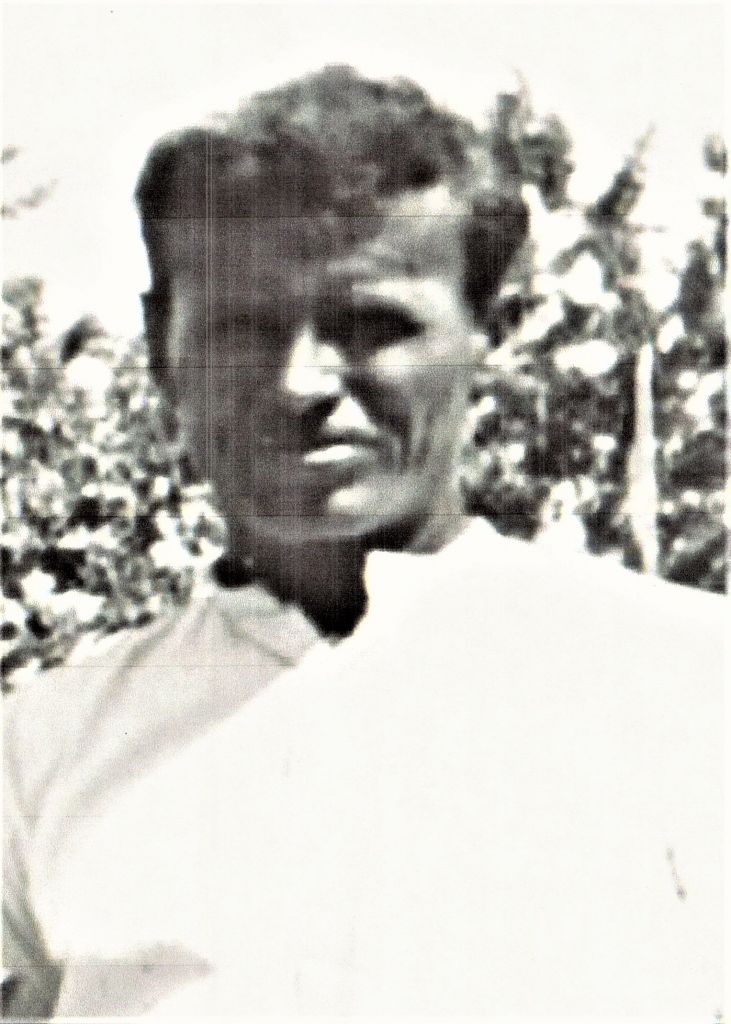
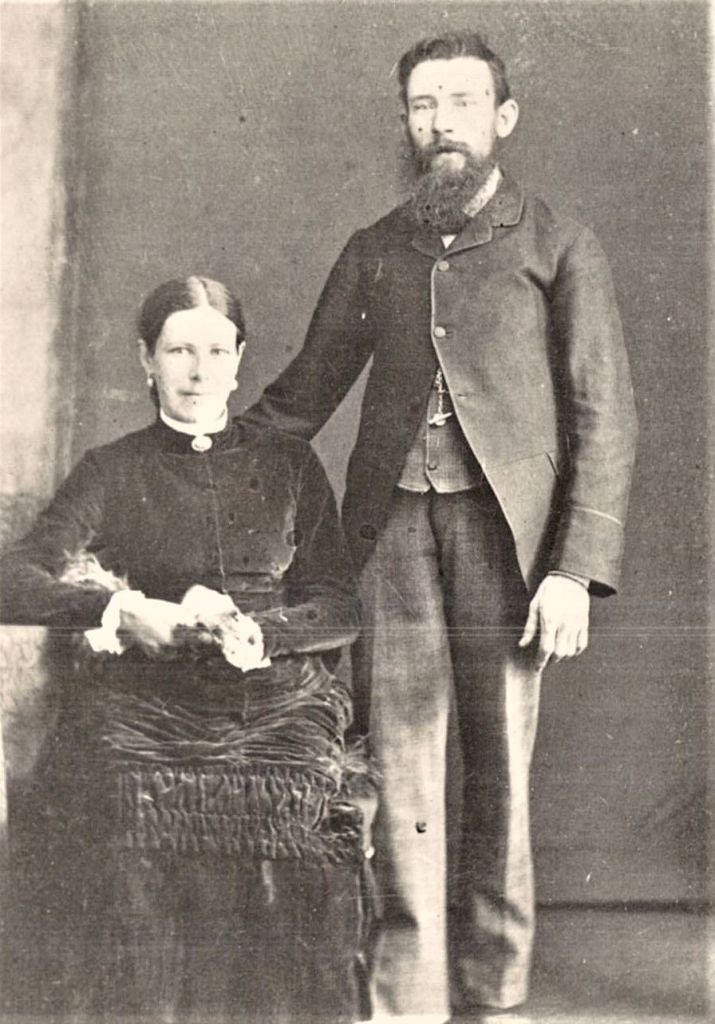
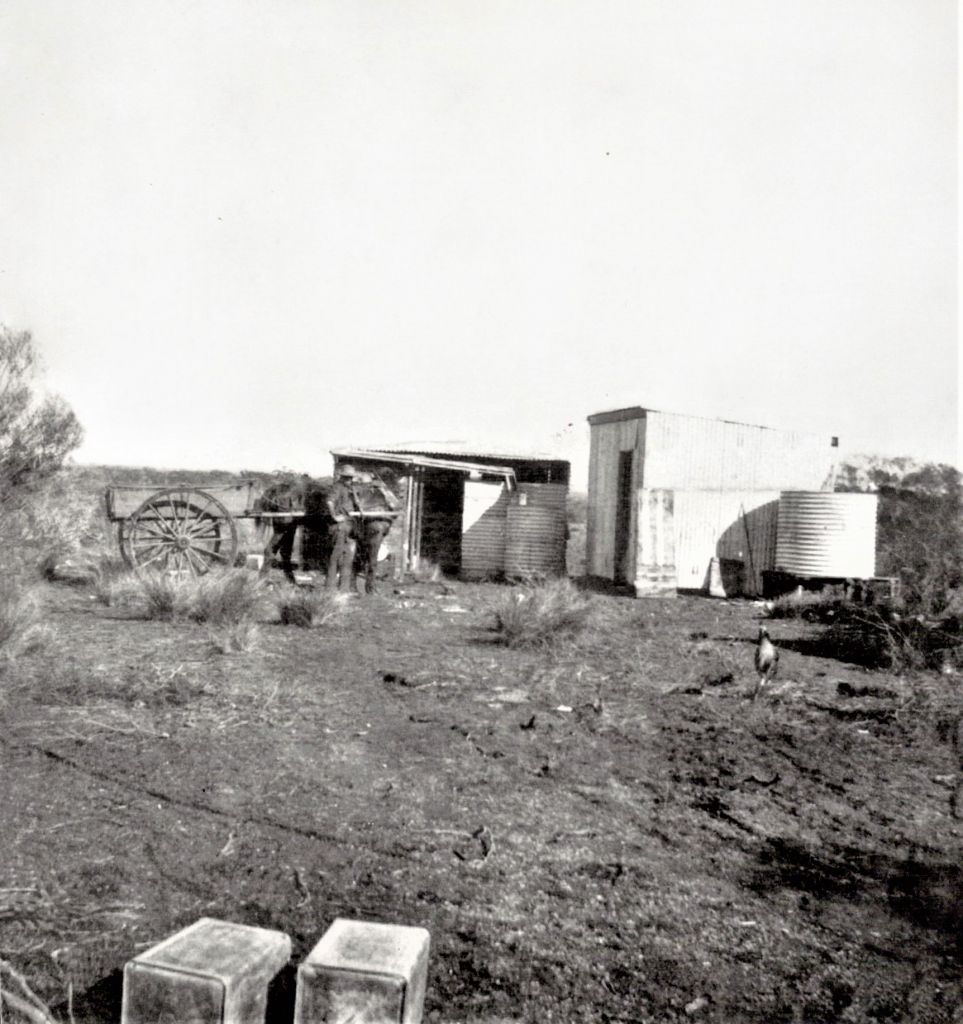
Critch History. Backtracking and Bush-tracking
The early Geraldton Critch family consisted of, brothers Frank, William (Will), Thomas (Tom) Leo, and Charlie and their sisters Madeline (Mrs. Sonny Collins) Alma (Mrs. Pat Smyth) Grace (Mrs. Bert Collins) and Kathleen who was last born in 1907 and remained a spinster.
Brothers Sonny and Bert Collins married two Critch sisters. They were two of four Collins boys who established and pioneered Glenburgh Station in the Gascoyne which remarkably, is still in the Collins family name to this day. (Refer “Winning the Gascoyne” by R. M. McDonald)
Vale Frank Critch
Leo’s eldest brother, Frank was a reasonably well-known businessman and sportsman in Geraldton circles and had served on the Geraldton Municiple Council for a couple of terms.
Frank was held in great esteem in the Geraldton district. As well as following in his father’s footsteps and being a member of the Municipal Council (1917-1919), he was also active in the Royal Agricultural Society serving as president for several years.
Franke was transferred to Fremantle to manage Horsmann’s office and he bought a house at 49 Petra St East Fremantle. He managed the Fremantle office until after the financial crash of ’29 when Mr. Horsmann passed away. He then bought the business along with two buyers, Mr. Manuel and Mr. Loukes, and they traded as Critch & Co, Wool, Skin & Hide Exporters in Essex St Fremantle. His business covered an area from Wiluna to Albany.
We note Frank’s departure enroute to Fremantle in 1921
Geraldton Express
9th July 1921
MR. F. J. CRITCH’S DEPARTURE.
FAREWELL PRESENTATIONS.
Mr. F. J. Critch, who has for several years been the manager of the Geraldton business of Mr. Charles Hormann, hide and skin merchant, and who has been appointed to the more responsible position of manager of the Fremantle branch of the same firm, was yesterday made the recipient of a couple of presentations on his departure. The gathering took place at the Council Chambers, and Mr. W. McKenzie Grant, President of the Victoria District Agricultural Society, presided over a representative gathering. The Mayor (Mr. G. A. Kempton), who was asked to make a presentation on behalf of the citizens, requested Mr. Critch’s acceptance of a handsomely illuminated address setting forth their appreciation of his services as a member of the Municipal Council, an active worker on behalf of the Agricultural Society, and as an enthusiastic supporter of all manly sports and pastimes. They were very sorry, he said, that Mr. Critch was leaving Geraldton, as they could ill afford to lose a man of his energy and ability. He was born in the district, and, having lived there practically all his life, knew it as few did. All his work, whether in connection with the Agricultural Society or the Municipal Council, had been for the advancement of the town, and they hoped the success which had attended him in Geraldton would follow him in Fremantle. The Chairman, on behalf of the Agricultural Society, presented Mr. Critch with a travelling case, and a rug for Mrs. Critch. He said Mr. Critch had occupied various positions in connection with the society, and for a long period was chairman of the committee, a position which called for no little ability. He was leaving to take up a more responsible position at Fremantle, and while feeling gratification at his advancement, they regretted his loss to the community. It should be their desire to cultivate citizens of the type of Mr. Critch. They were now facing troublous times, and it was only by a general desire for advancement and the general well-being of the community that they could make progress. It was for them to try to develop a good type of citizen such as Mr. Critch, so that they might steer clear of the troubles which appeared to be threatening. Perhaps in the near future they would be able to welcome Mr. Critch as Mayor of a greater Geraldton if the talk of separation came about. (Laughter.) They wished Mrs. Critch and him every success and happiness in their new home.
Mr. F. Green, in supporting, said Mr. Critch was a member of the Municipal Council during his term as Mayor. They used to have their arguments out in committee, but when the questions came before the Council it did not matter how much they had differed in committee, he always loyally supported him in council. He hoped Mr. Critch would do well in Fremantle, and if he put forth the same ability and energy, he had shown in Geraldton he could not help but succeed.
Mr. F. Gardner, who also supported, said he had known Mr. Critch from his boyhood days, and when he grew to be a young man it was one of the recognized things to go to see Frank Critch kick long goals. He was also a great athlete and achieved considerable prowess as a runner. He remembered watching him win no fewer than 13 maiden races. (Laughter.) Mr. Critch was a thorough good sport, and, with I all his friends, he regretted they were losing an estimable citizen, and wished him all sorts of good luck for the future
Mr. F. J. Critch, in responding, said that the presentation had come as a very great surprise, but he thanked them most sincerely for their kind re-marks regarding his wife and himself. He was leaving Geraldton with a considerable amount of regret. He was interested in many local matters, and any success he had achieved was through the kindness and support of the people of Geraldton. As far as his connection with the show was concerned, he had not done so much himself, but he had been fortunate in having a hard-working committee who had done everything possible to support him. If the people of Fremantle treated him in the same way as the Geraldton people had done, he could not help but.be satisfied.
He thanked them heartily on behalf of Mrs. Critch and himself for their handsome presents.
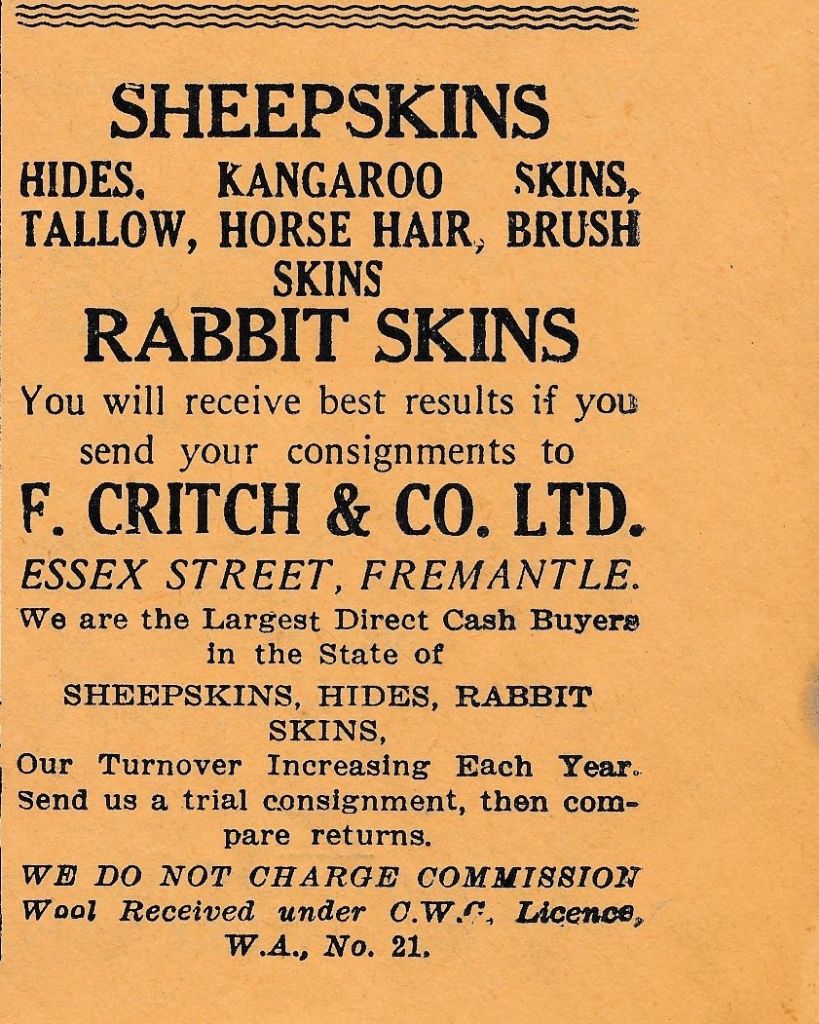
Appointment of a Geraldton Young Man
It is worth including at this juncture, an article appeared in the Geraldton Express in May 1923 that was in reference to Leo’s second eldest brother, the afore mentioned Will Critch.
“The people of Geraldton will be pleased to learn that one of the natives of the town, Mr. William Critch, son of Mr. F. H. Critch, of the Express is making his mark in Vancouver, Canada where he now resides. Mr. Critch was recently appointed to the charge of the Spanish Consulate in that great Province etc….”
In reference to the above, Will Critch’s daughter Mary (Zummer), writes in her memoirs about the period her father spent in Spain leading up to this appointment.
She writes
“He frequently wrote home about his admiration for the Latin way of life and the wonderful cosmopolitan atmosphere of Buenos Aires. It was a good life for a young expatriate who was a look-alike for Woodrow Wilson, complete with the Hapsburg chin. Many of his letters were published in the Geraldton Express where his father was now editor.” [“his father” being the afore-mentioned Francis Henry Critch]
Charlie, Leo’s youngest brother also made somewhat of a mark for himself in life, mainly as a prospector/miner and mainly in the Wiluna area.
Geraldton Guardian and Express
29 December 1932
WILUNA NEWS
CHRISTMAS FESTIVITIES NEED FOR TOWN IMPROVEMENTS
A rather important happening that may have a bearing upon future prospecting in this district is the discovery by prospectors Hammerston, Critch and Atkins of an entirely new auriferous occurrence at Kingston, thirty miles out on the road towards Lawler’s. The formation is of lode matter and consists largely of chlorite schist in considerable extent. Veins of this character usually contain good values in gold, and the present discovery is not wanting in that respect. The show is opening up well; over 50 tons are at grass, and the prospectors are of opinion that they will have considerably over 100 tons of payable ore for treatment at the coming run of the Wiluna battery. The find is causing a deal of attention, and prospectors Joe Duffy and Charley Carrett have already pegged on to the area of the discoveries and are sinking a shaft to work their ground.
Some light shines on Leo
As previously mentioned, other than the reference made by Doreen Butler in her book “To Sow The Barley” and up to now, there is scant evidence of Leo even being in Tenindewa except for a couple of mentions that emanate from another local and invaluable book “Memories of a Migrant” written by Kathleen (Palmer) Rumble and which recorded her arrival at Tenindewa in February 1914 and snippets of her subsequent life there.
Kathleen writes of their arrival at Tenindewa Siding in 1914. Her father Percy had arrived one year previous.
We walked down to one of the quaint little railway cottages to get our letters. The [Tenindewa] post office was kept by the ganger’s wife, Mrs. Eves. No doubt we were objects of great interest to the inhabitants. The cottages were built mostly of old railway sleepers stood on their end with corrugated iron on the roof. They seemed very small to house a family–mostly just two or three rooms.
By now we were ready to drive out to our “farm”.
Dad drove old Sandy (who belonged to Leo Critch) and Claude mounted Prince also Leo’s.Click on the blue text for further information:
(Scroll to page 14)
Kathleen (Palmer) Rumble
The second reference that Kathleen makes of Leo is in the chapter of the same book where she speaks of Leo and his brother Tom and describes a chapter of the book “We Survive a Tornado”. This event took place one year after her arrival in February 1915 where she describes a terrifying February night at Tenindewa surviving what was almost certainly a cyclone. (there was no technology or protocol to forecast or track or indeed name an event of that kind in those early days)
There were two brothers Tom and Leo doing some clearing for Dad. They came over from their camp and played cards during the evening. The winds started to blow fairly heavily and the boys said “Goodnight” and left for their tent. That wind blew so loudly that we could not hear each other speak. I have said our humpy was made of hessian. The sand blew through it and hit us like little darts. The “millar-lamp” was flickering and all of a sudden the roof stated to lift. Cyril climbed up and grasped the jarrah framework and hung with all his weight to keep it down. Cyril was finding it too much for him so my dad sent my older sister and me across to ask Tom and Leo to come back and help us.
It was impossible to walk alone in that howling storm. Gwen and I clung together and somehow made a little progress. All round us limbs were being torn from trees, and crashing down. Fowls were blown down from their perches in the trees. Kerosene tins were flying past us as we blindly made our way to where the boys were camped just the other side of the farmyard. We were amazed to see the spring cart being forced out from the bough-shed where it was kept.
We reached their tent, and called out but could not make ourselves heard. All was in darkness so we turned for home. Just then a brilliant light shot out from the house and we presumed it had caught fire.
We made our way back and discovered that two sheets of corrugated iron had been torn from the roof, and that it was the light that came shining through, that we has seen. You must understand that there was no ceiling to the humpy, as there was also no flooring-just good mother earth. Tom and Leo came in then, they had been sheltering in the scrub that was left standing close to the house. As their tent was pitched right under a huge tree they had realized the danger of it being blown over and had left their tent. They stayed the night with us then. We had just two rooms, four women in one room, four men in the other sleeping toe to toe like sardines in a can. We pulled one bed up against the door as the latch would not hold against the raging fury. It calmed down some time later and the rain began to fall.
[Note; Tenindewa had 100mm of rain in 5 days in late February of that year]
Next morning the boys (Tom and Leo) returned to their camp, the big tree had fallen right across. I wonder how long [that was] before it fell that Gwen and I had stood there. We shall never know.(Click on the blue text for further information)
AND
(Scroll to page 30)
Kathleen (Palmer) Rumble
It is worth noting that many, many years later that this same Kathleen explains in a letter to Mrs. Mel Weir, a now departed but beloved long time Tenindewa resident how the connection between the Palmer and the Critch families had taken root and indeed had blossomed.
Kathleen Palmer or Kathleen Rumble, as she was by then, would have been 94 when this letter was written. Leo’s “homestead” and the Palmer residences would have been about 6 kilometers apart.
Villa 76
Parkland Villas
52 Liege St
Woodlands 6018
September 8th, 1994
Dear Rob and Imelda,
It was nice to get your letter. It brings back old times. Years ago, I met Imelda’s mother. Unfortunately, my memory of names is not good. At the time she was living with the Critch family in Geraldton.
She had a position in the Post Office.
The Critch family and our family (the Palmers) were good friends. Mr. Critch. (Snr) was the Editor of the Geraldton Express…………..

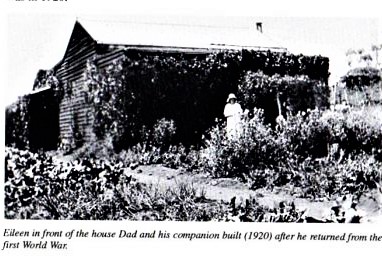
What was well documented about Leo Joseph Critch, to give him his full title, is his marriage to Mary (May) Malloy of West Wyalong NSW. “May”, as she was affectionately known had been visiting her Aunt Mrs. George (Clara) Williamson of Yuna when the relationship was spawned, and they went on to marry in July 1918. Though they missed out on having their vows consecrated in the now famous St Francis Xavier Cathedral in Geraldton, as it was only 3 years into its making at that stage, they did have, what must be seen in hindsight, the wonderful consolation of being married by that very famous architect/builder/priest in Father John Hawes. They were married in the Stella Maris Convent chapel adjacent the Cathedral. Mary Patricia was born in 1919, Kevin Joseph in 1921 and Charles (known as Mickie) in 1923.

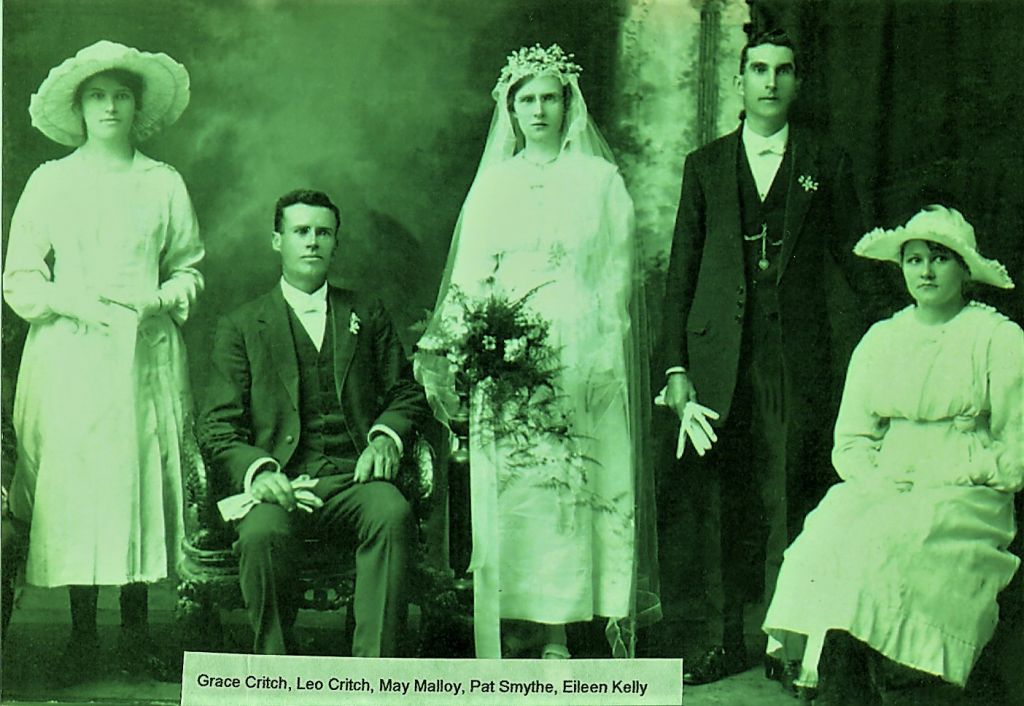
Geraldton Express Wednesday
17th July 1918
Wedding Bells
On Tuesday, July 9th the marriage of Miss Mary Malloy (daughter of Mr. and Mrs. Patrick Malloy of Wyalong, N.S.W.) to Mr. Leo Joseph Critch (Forth son of Mr. and Mrs. F. H. Critch of Shenton St Geraldton), was celebrated at the “Nuns Chapel” adjoining the Presentation Convent, Geraldton. The bride was given away by John Kelly sen. (uncle of the bridegroom) and Mr. E. P. Smyth carried out the duties of best man. The Rev. Hawes performed the ceremony. The bride was gowned in a dainty dress of silk, effectively embroidered and studded with seed pearls. The usual wreath and veil were worn, and she carried a bouquet of white flowers and ferns.
Miss Grace Critch (bridesmaid) sister of the bridegroom wore a cream silk coat frock and a cream velvet hat to match. Miss Eileen Kelly (bridesmaid), cousin of the bridegroom, was dressed in a flesh pink silk crystalline frock, relieved with strappings of the same shade, with white, trimmed with tiny pink rosebuds. The wedding ceremony concluded, the bridal party motored to the residence of the bridegroom’s parents where a cake and wine were partaken of, and the usual toasts (not forgetting absent relatives and friends) were duly proposed and responded to. Many valuable presents were received. The happy couple left for their home at Tenindewa by train the following morning.
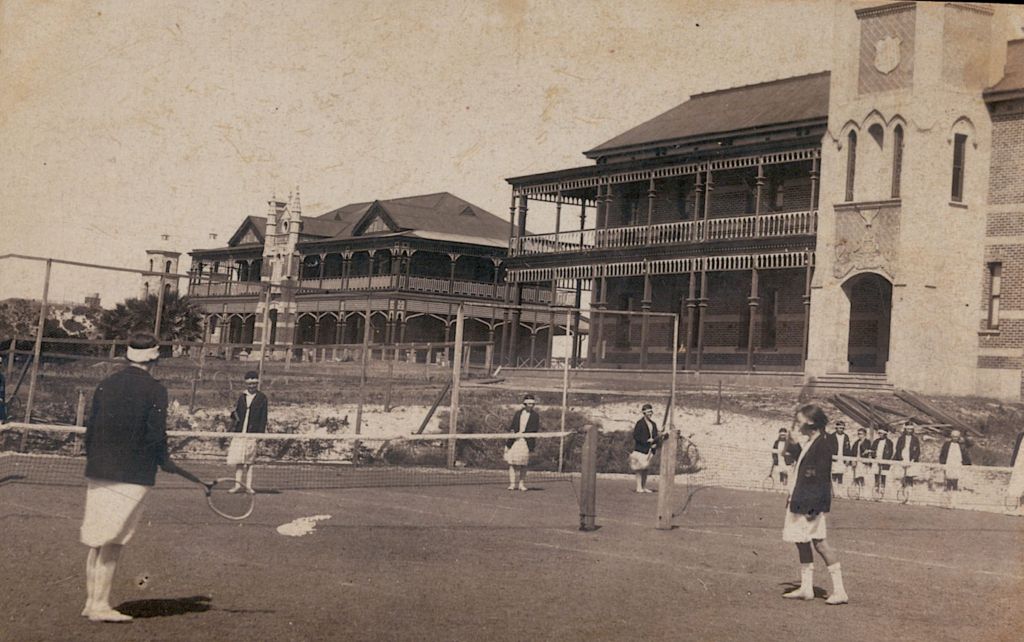
This photo would have been taken during the building phase of St. Francis Xavier’s Cathedral (1915 to 1939)
Perplexingly, and in reference to the Leo and May’s tenure in Tenindewa, it is known that they, by 1923 at least, had relocated to Undertarra, as it was then referred to then or Tardun (as it is now known) which is 40 kilometers southeast of Mullewa and they established a new home there or perhaps given emerging information, we might say another home?
The only reference on Leo in searching Mullewa Road Board minutes is he and Mr. Harry Stokes of Tenindewa are involved in checking out water issues for the Board?
Mullewa Mail
15 June 1922
Mullewa Road Board.–Mr. L. J. Critch reported that he had inspected several of the wells and their equipment on the Wongąn-Hills Road and gave details of the work required to repair same. After discussion the chairman agreed to make a personal inspection, and it was resolved on the motion of Messrs. Stokes and Pass that he be authorized to have any necessary work done
But concerningly and sadly, reality bites, with the emergence of the following newspaper advertisement.
Pertinently the date of this following “advertisement” appears just one month after the passing of Leo’s wife, May.
West Australian
10th April 1926
AUCTIONS MORTGAGEE’S SALE
FARM NEAR MULLEWA. FRIDAY, APRIL’ 23 1926AT Three PM AT CLUB HOTEL, GERALDTON.
ELDER, SMITH and COMPANY LIMITED, under instructions from, the Mortgagee, will OFFER by AUCTION as above: —
Property known as Critch Bros.’, consisting of Victoria Location 1299, the subject of Certificate of Title Volume.- 282, Folio 74;
Victoria Location 3036, the subject of Crown Lease 2019/1920.
Victoria Location 3038, the subject of Crown Lease 2020/1920,
(containing together 2,026 acres 1 rood 29 perches) [500 hectares]
This property is situated three miles from Tardun (Undatarra) Siding, and 24 miles south of Mullewa. Improvements consist of boundary fenced with five and six wires, subdivided into three paddocks with 4 wires. 250 acres chopped down, and partly burnt up.
4-roomed house of galvanized iron, with verandahs, ‘
Shed and sheep yards.
The land is suitable for- wheat, sheep and general mixed farming, and is watered by a good surface soak. Terms: One-quarter cash, balance by three equal yearly payments – bearing interest at seven percent. Further information; from ELDER, SMITH and Co., Ltd, Perth and Geraldton:
or STONE. JAMES and CO., Solicitors,
Further evidence that supports Leo’s disastrous demise emerges from a random letter written to long-time and well-known former resident of Tenindewa in Mr. Clem Keeffe it reads in brief:
18 Beltana Road
Pialligo ACT 2609
25th May 2001Dear Clem,
Herewith is the screed I promised to send you some time ago. Hope you find it of some interest anyway?
My eldest brother, Laurence Percy Eliot, always known as Tom, went onto the property at Tardun, then known as Undertarra about 1923. He was about 19 years of age, having finished school at Scots College not long before.My father, who had been in the Customs Department all his working life, bought the land as a future for his three sons. When Tom first arrived there, he boarded with a family named Critch, who’s land adjoined that of the Saunders’s block to the east. The story is my brother used to ride a grey horse belonging to Leo Critch. At that time the films of Tom Mix and his grey horse were current, so the three Critch children called my brother “Tom” and the nickname stuck……..
[the land referred to is 5 kilometers east of the old Tardun settlement]
Leo Critch and his family walked off their block to the east of Saunders early in the depression. The next owner was Alf Haddy etc…….Regards
Noel Eliot.
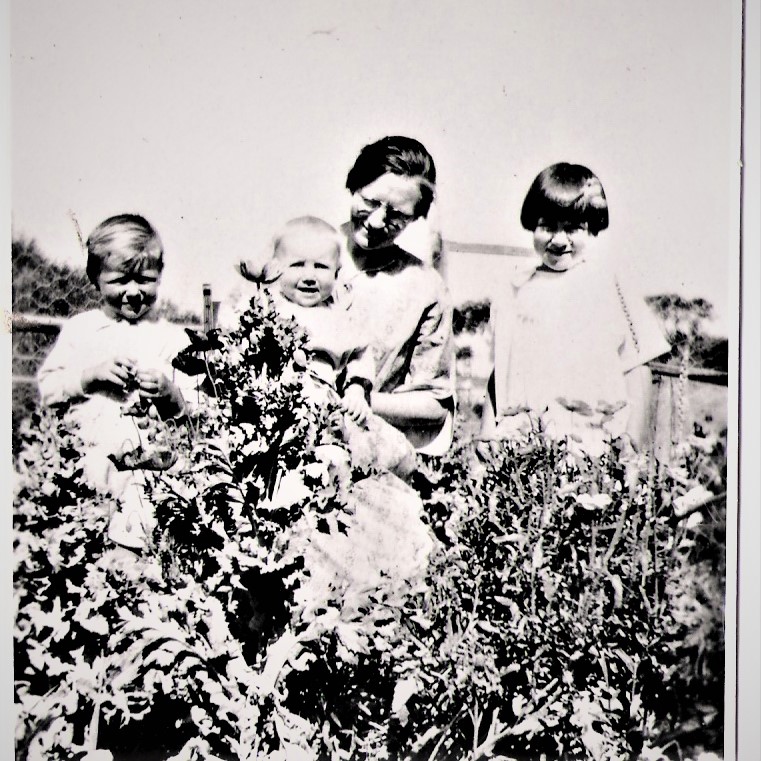
Given that Kevin was (on the left) was born in 1921 it would be fair to surmise that this photo (above) taken in 1925. Mr. Eliot would not have known that soon after their third child Charles was born May (Mary) was diagnosed with terminal cancer. Leo and his family’s life unraveled stupendously from about the time May was diagnosed by local physicians with breast cancer (1926) and given a very short time to live. She, as one might expect, requested that she return to West Wyalong in New South Wales to see out the remaining few months of her life, close to her Malloy family.
According to his son Kevin’s account in his book “On the Road Again”, he rarely saw his father, as Leo found work wherever he could around Wyalong while May lingered on in hospital much longer than the doctors had predicted and it wasn’t until March 1928 that she went to her final rest.
West Australian; Perth
Wednesday 28th March
1928
R.I.P. CRITCH. —On March 26, at Wyalong, New South Wales, May, beloved wife of Leo Critch, late of Geraldton, Western Australia, and loving mother of Molly, Kevin, and Charlie. R.I.P.
***************************************************************************************************************
Note; Kevin was very young in his time of his exile in the east and given the fact that he mentions “he rarely saw his father” and given emerging evidence highlighted earlier, it is most likely that Leo in fact returned to West Australia for much of the time that May was confined in a desperate attempted to hold the farms together.
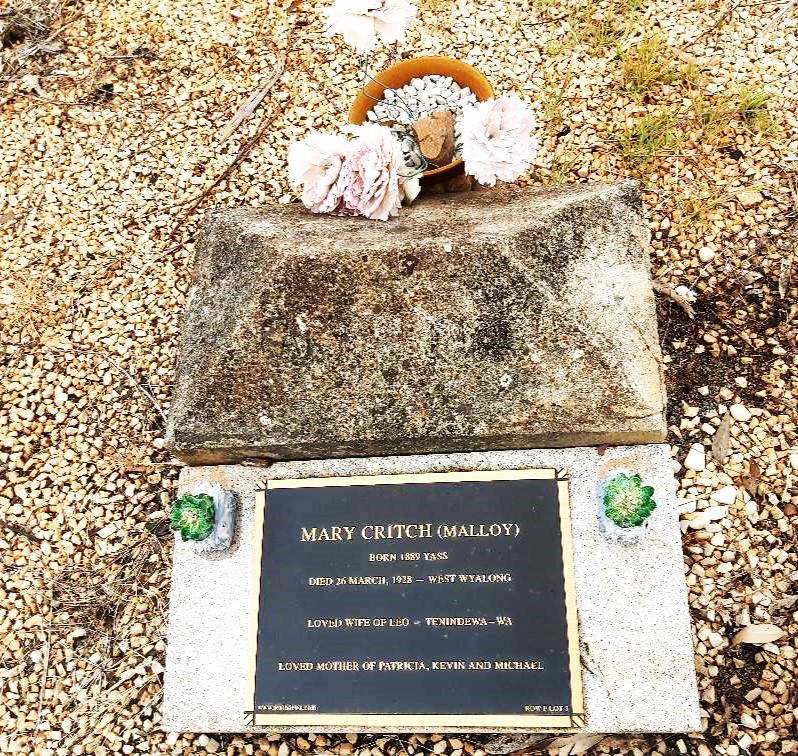
However, on reading through Leo’s contributions to the Express via, Tenindewa Notes, it is clear he spent some part of those two years back in W.A. and including at Tenindewa attending to commitments as best he could, given the general economy of the time and his personal situation.
After May’s funeral Leo returned to WA with the children but by now the Tardun lease had been forfeited to the [probably the I.A.B.] bank due to unpaid debts.
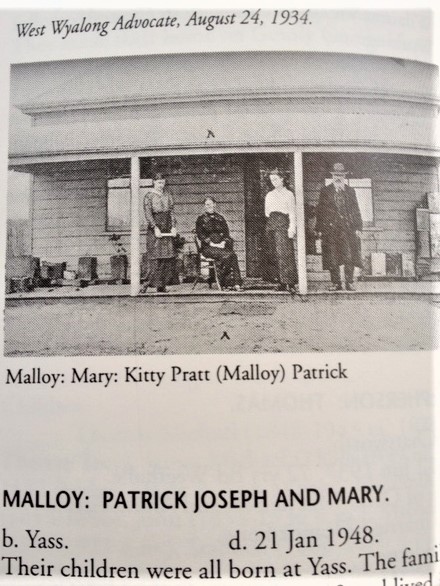
Kevin takes up the story and outlines in “On the Road Again” the course of events that followed
I have no memory of my first five years, however, I know that in that time I had many moves in my life, from Tenindewa to Undertarra (now called Tardun). When I was about 5, my mother was diagnosed as having breast cancer and was told she only had a short time to live. She must have spent some time in Geraldton having treatment as I recall living in a house in Waldeck Street and attending my first school, Stella Maris Convent. It seems that my mother wished to be with her family for her last days and also hoped they would be able to help look after us, so very soon after this we left W.A. for Wyalong.
We travelled to the Eastern States by train and when we arrived Mum went into hospital. Relatives and close friends of Mom’s offered to look after us, and we all went to different homes. The Galvin family took Pat, the Duffy family Charlie, and Mom’s brother Dinny Malloy and his wife Kate took me. Mom lived quite a bit longer than expected but in great pain. I didn’t see her very often because I was miles away at the Black Swan Hotel in Wagga Wagga where Dinny and Kate had the Black Swan Hotel. I didn’t see dad [Leo] very often either as he took any job he could find as this was during the Great Depression……….Click on the blue text for further information
(See page 7)
Kevin recalled attending his mother’s funeral (in March 1928) in West Wyalong at the age of 6 years and of being grave- side. He remembered that day for the rest of his life…. he continues
Very soon after the funeral Dad arrived [at Wagga] to decide on my future. I was given the option of staying with Dinny and Kate or going back to W.A. with Dad. This was a hard decision for a young child. I wanted to do both, but finally decided to go home with Dad.
It took a week to travel back to W.A. and when we arrived we stayed with Auntie Alma Smyth (Dad’s sister), in Fremantle for a few days while Dad tried to get organized. The farm at Tardun had been sold while he was away because of unpaid debts and we were left with nothing………..
At this point Leo had to make the toughest decision of his lifetime in order to keep his kids healthy and enable himself to find much needed employment.
Kevin expands;
Click on blue text for further information
(See page 11)
What a nightmare those 3 years must have been for Leo. In a snapshot analysis in just that short time he had lost his wife, a son and his livelihood. Leo however did make somewhat of a recovery and by 1931 he had remarried but his health had been compromised. With his new wife Elsie (nee Woodthorpe) they produced a son, Barry in 1935. This same son Barry recalls his father, Leo, telling him that at the end of that horror period he realized that after a half lifetime of slavish toil and constant self-deprivation he had walked away with nothing but “the arse out of his pants and the souls out of his shoes!!”
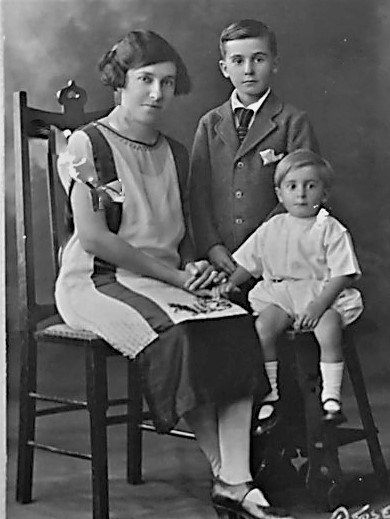
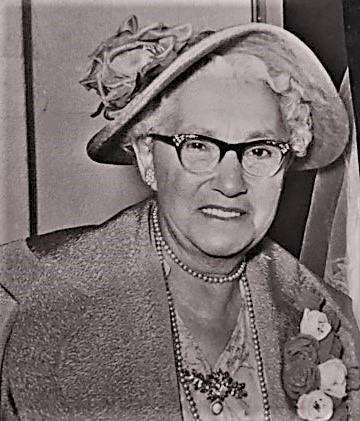
The marriage of Leo and Elsie Woodthorpe however was definitely a turning point for Leo’s fortunes in 1931 as this most British of British women who was about to become not only a devoted partner for the next 17 years but became also the mother of his third son in Barry in 1935. For Leo, as we know, it was his second marriage but for Elsie it was in fact her third marriage.
It has to be said that Elsie, as it eventuated, was shown to be a woman of extraordinary resilience and stamina. She displayed wonderful devotion to her 4 sons, but sadly in a way, what made her so extraordinary, is that she was married to 4 different gentlemen, had sons to three of them and comfortably outlived them all.
Elsie was born in 1885 in England and arrived in WA in about 1905 and was married to a Mr. George Wallace to whom she had 2 sons in Allan and Fred. She worked with George, quite often couriering very valuable items in the bottom of a pram, as George, was a watchmaker who operated out of the Boan’s establishment in Wellington Street in Perth. She was widowed in 1921 when George succumbed to Typhoid Fever.
In 1923 Else met a Mr. Arthur Noble, a farmer at Wagin. They married in 1925 and produced a son Norris or “Norrie” as he was affectionately known. Incredibly Arthur also contracted Typhoid Fever and died after a short illness in 1927.
[Note; There is a road, “Noble Road” in the Wagin Shire named after that Noble family]
As we know she married Leo in about 1929, produced son Barry, and was widowed for the third time in 1948.
Husband four was a Mr. Harold How. They married in 1950. Harold had a son of his own in Ernie and a daughter named Louise. Harold had a successful business making pottery which operated in Wellington Street Perth but again tragedy struck when in 1955 Harold was struck down with a heart attack at their home, in Wellington Street, and died, virtually instantly.
Elsie in true British style bravely soldiered on until she too became ill with a kidney complaint and died just a couple of days after being admitted to hospital in 1962 aged 77 years.
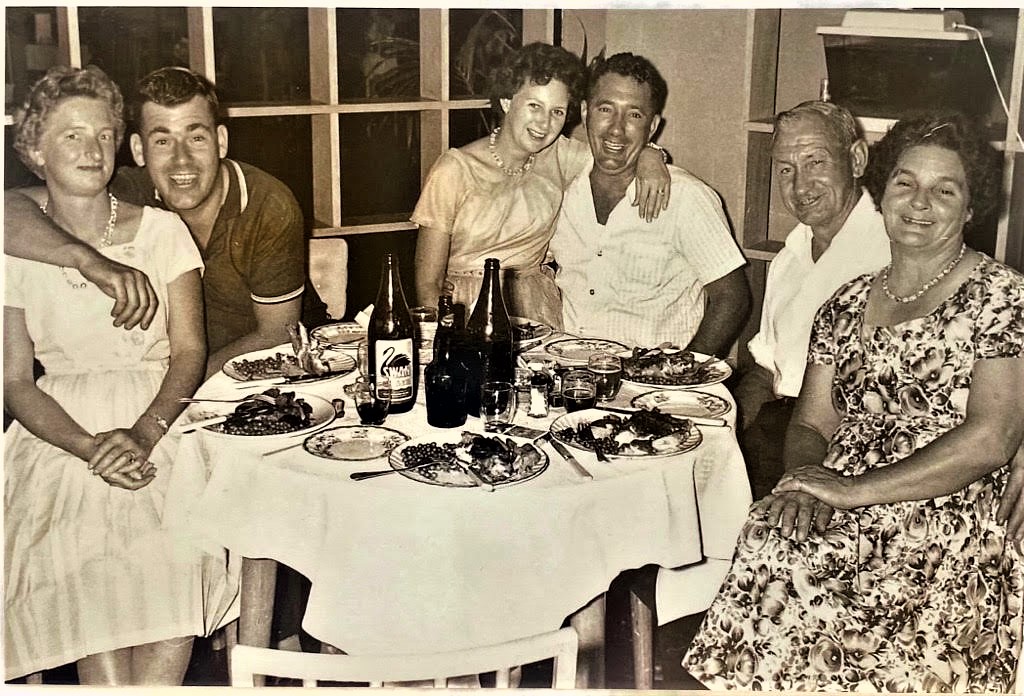
In 1923 Else met a Mr. Arthur Noble, a farmer at Wagin. They married in 1925 and produced a son Norris or “Norrie” as he was affectionately known. Tragically Arthur also contracted Typhoid Fever and died after a short illness in 1927.
Misfortune was to plague this branch of the family too as their only son Norrie, lost his wife, Dulcie, in tragic circumstances during the period they were managing a property, “Redacres”, for the Williamsons at Yuna. The sad coincidence here is that Dulcie Noble passed away suddenly at home, the very same home (as above) on the very same property that, Kevin and Mary Critch had occupied some 11 years earlier.
(The Critch’s had lost an infant son in Kevin during the period they lived there also)
Dulcie died of a rare and aggressive kidney disorder with almost no warning. But so it continued when, some eleven years hence, Norrie himself was to be struck down suddenly of a heart attack at Albany in 1975 at just 48 years of age and it is almost beyond belief but those two disasters were followed by yet another when one of Norrie and Dulcie’s’ two sons, in Rodney, seemingly a perfectly fit healthy young man and recently married, succumbed to an aneurism while delivering machinery to the Thomas family at farm near Mullewa in the early 1980s. He was aged just aged just 32.
Note; There is a road, “Noble Road” in the Wagin Shire named after that Noble family.
As we know Elsie married Leo in January 1929, produced son Barry, and was widowed for the third time in 1948.
Husband number four was a Mr. Harold How. They married in 1950. Harold had a son of his own in Ernie and a daughter named Louise. Harold had a successful business making pottery which operated in Wellington Street Perth but once again tragedy struck when in 1955 Harold was stricken with a heart attack at their home, in Wellington Street, and died, virtually instantly.
Elsie in true British spirit bravely soldiered on until she too became ill with a kidney complaint and died just a couple of days after being admitted to hospital in 1962.
But briefly back to the Winchester period and Kevin takes up the story again. (From “On the Road Again”)
Dad remarried in 1931, they lived mainly at Winchester (now a nonexistent siding north of Three Springs) until about 1937 when they moved to Chidlow. As well as Elsie’s three boys, in 1935 they together had a son Barry. The farm at Chidlow was a dairy farm with an orchard, poultry etc. Because of his health Dad was told to take it easy by his doctor, so he sold the farm and worked for Goldsborough Mort and Co. (now Elders) in Fremantle for a few years as a clerk. When the war finished (1944) they went back to Chidlow to live where he died of a heart attack. (in 1948)
Kevin Critch
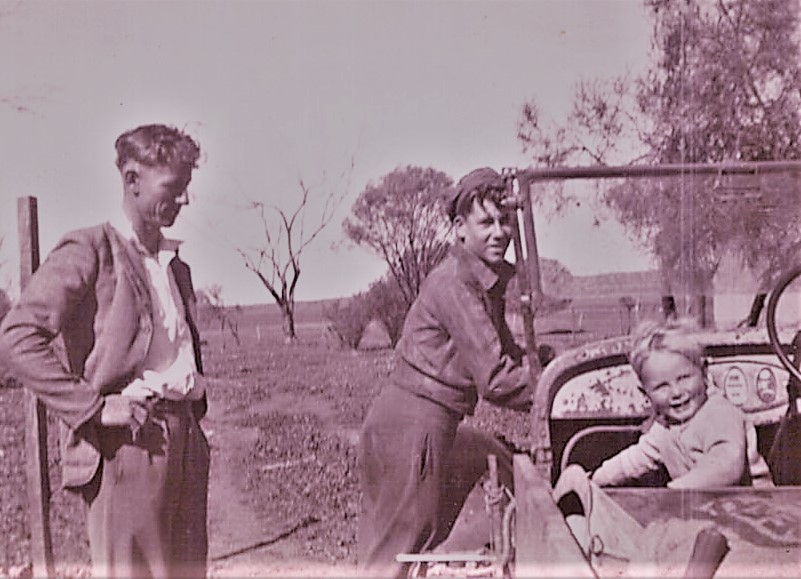
This was the infamous car named “Tottie” that Kevin speaks of in his book
Leo’s 3rd son in Barry Critch, who was born at Three Springs, explains that in the Winchester period he, as a young child, lived with his father Leo and his mother Elsie, his half-sister Patricia Critch, his half-brother Fred Wallace, another half-brother in Norrie Noble and finally when Kevin, another half-brother, turned up it was certainly a “mixed and crowded house”. “To be honest” says Barry “It wasn’t a house really. It was more like a tent with a tin roof as it had no ceiling, a dirt floor and hessian for walls” and Barry continues “Kevin turned up during that Winchester period because his time at the Williamsons ended due to a hitch in options for education at Yuna“. Seemingly Leo had decided that young Kevin should move to Winchester for further education where he (Leo) was employed by what was then a fledgling farmer controlled co-operative that we know today as CBH. Ltd.
Kevin explains;
Dad lived in a tent in a reserve near the main road, and my bed was a sheet of corrugated iron on two boxes, with a bag of chaff for a mattress, and wheat bags sown together for a rug. This was living at it’s very roughest and toughest. In those days the Government didn’t give assistance to unemployed people so it was a matter of going out and trying to find any sort of work you could, and if you couldn’t get work you could beg, borrow, steal or starve. Lots of tramps were walking the roads every day in search of work, and I used to talk to them when they came to beg for food, and they used to tell me of their experiences on the road. This life was a good education for me as this is where I claimed I became a “Rhodes Scholar”
(A Main Roads Scholar that is)[Kevin in fact attended 7 schools and finished his education at the age of 14]
We had very little food ourselves but I always tried to get them something to eat. We were camped very near the wheat stacks (bags in those days) and the spilled wheat attracted hundreds of galahs which were considered a nuisance. I had a Daisy-Air Rifle and a shanghai and I could usually get a galah or two in a few minutes, so as a last resort I would offer them galah and tell them how to pluck and cook them. A lot of people where eating galah during the depression……….
Kevin Critch
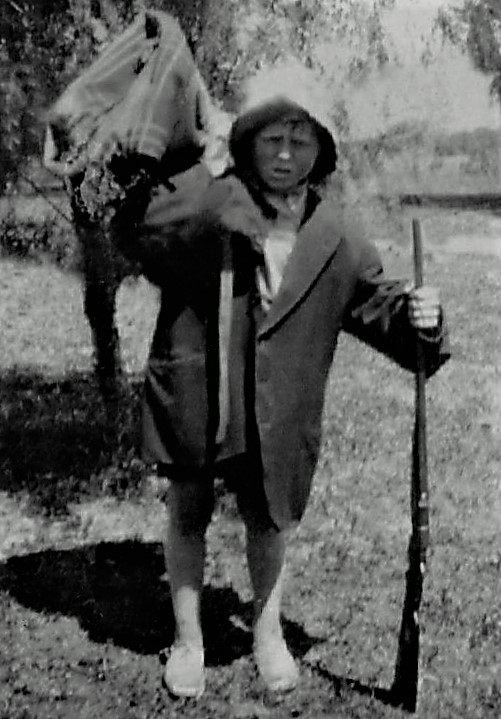

At about this time (1939), though he was probably blissfully unaware, time for Leo was closing in but a few consolation events were taking place that would have very much have gladdened his heart. The first was the marriage of his eldest child and daughter in Patricia to a Mr. Adrian Andrew Olaf Sorenson, an absolute gentleman and of Danish extract, who was at that time working in the gold industry in Wiluna. Pat, as she was often known, but in reality “Mary Patricia” by birth name, was working in a drapery store in Wiluna which may come as a surprise to some in the modern age but Wiluna was very much a boom town with a population approaching 8,000 inhabitants at that time. To give a clearer picture it should be explained that Patricia’s Aunt (Leo’s youngest sister) Kath was the town’s Post Mistress and further, one of her uncles, in Charlie Critch, Leo’s youngest brother, owned a couple of successful gold mines including (Mt Fisher) some miles east of Wiluna in those days. He and Kath also owned a house in Wiluna town. All these facts, quite possibly, go a long way to explain what such an innocent young 19 year old lass was doing so far from Leo and so far from home in a town known more for its pubs than for its churches!
In as much as this union would have been a great joy to Leo, sadly, his poor health constrained him from attending the wedding and indeed giving her away, a task that was fulfilled by younger brother Charlie. The best man was Adrian’s friend in a Mr. George Hayes and the bridesmaids were Patricia’s friends from Wiluna in the McCormick sisters. Charlie Critch is to Patricia’s right in the accompanying photograph (below). Aunt Kath was the de-facto mother, sponsor and guardian angle for young Pat during that event.
The Nuptials took place at Our Lady Help of Christians Church in Wiluna and the presiding priest was Father Jamie Casey.
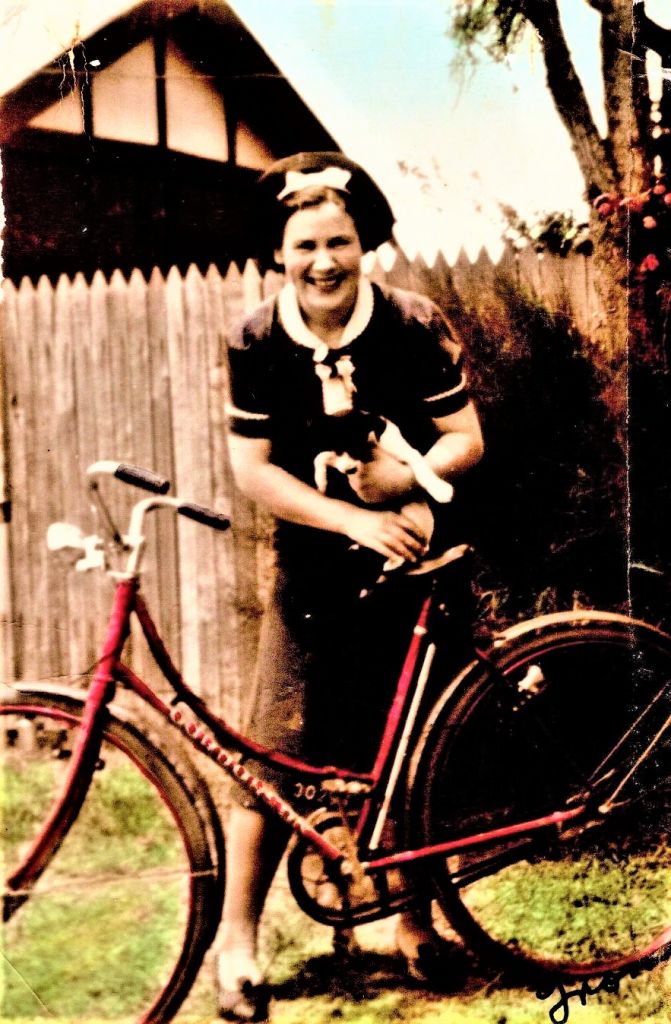
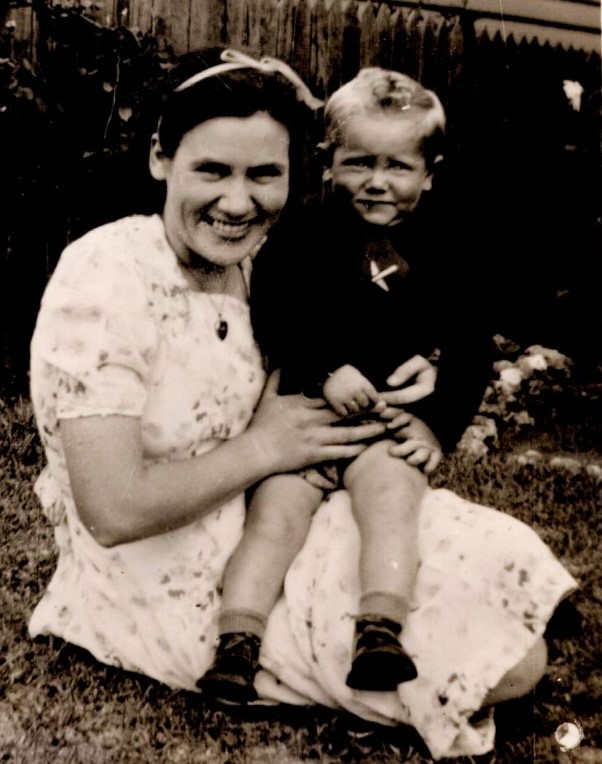
Adrian Kevin
This union went on to produce 6 grandchildren for Leo and May including Adrian Kevin Sorensen their first grandchild who was born in 1940. The complete Sorensen list was namely, Adrian, Erik, Gillian Christina, Vibeke (Metcalf), Peter and Lynette (Davey).
Footnote:
Tragically Gillian Christina who was born on the 30th of December 1944 contracted meningitis and died on the 30th of march 1944.

With the benefit of foresight, we, the readers know by now Leo has precious little time left on this earth but a second wedding involving his children would have been extra good news for him, regardless.
Kevin his eldest son, married Mary Rita Thackray of New Norcia in May 1946 quite soon after Kevin’s release from the military in 1945.
The nuptials took place at St Mary’s Catholic Cathedral in Perth. Mary was attended by her sister Margaret Thackray and Kevin’s best man was an army colleague in Mr. Tom Burns.
The newlyweds moved to a farming area called Yuna at the north end of the wheatbelt to take up residence where Kevin would work for the, very well known and very well regarded, Williamson Family.
The joy would soon turn to utter sadness for all involved and especially for Leo when his first “Critch” grandson in Kevin (jnr.) died just some days after his birth in February 1947. However almost miraculously, given the circumstances, within 12 months Anthony Joseph was born with no complications which very likely consoled Leo by again buoying his hopes and aspirations of keeping the Leo Critch family name on the map.
Leo, despite the fact Yuna was considered a long way from Chidlow in 1948 got to see this surviving Critch grandson but his demise came just a couple of months later.
Leo died on the 23rd of August 1948 at the Chidlow farm and it was reported thus in the Obituary Columns of The West Australian;
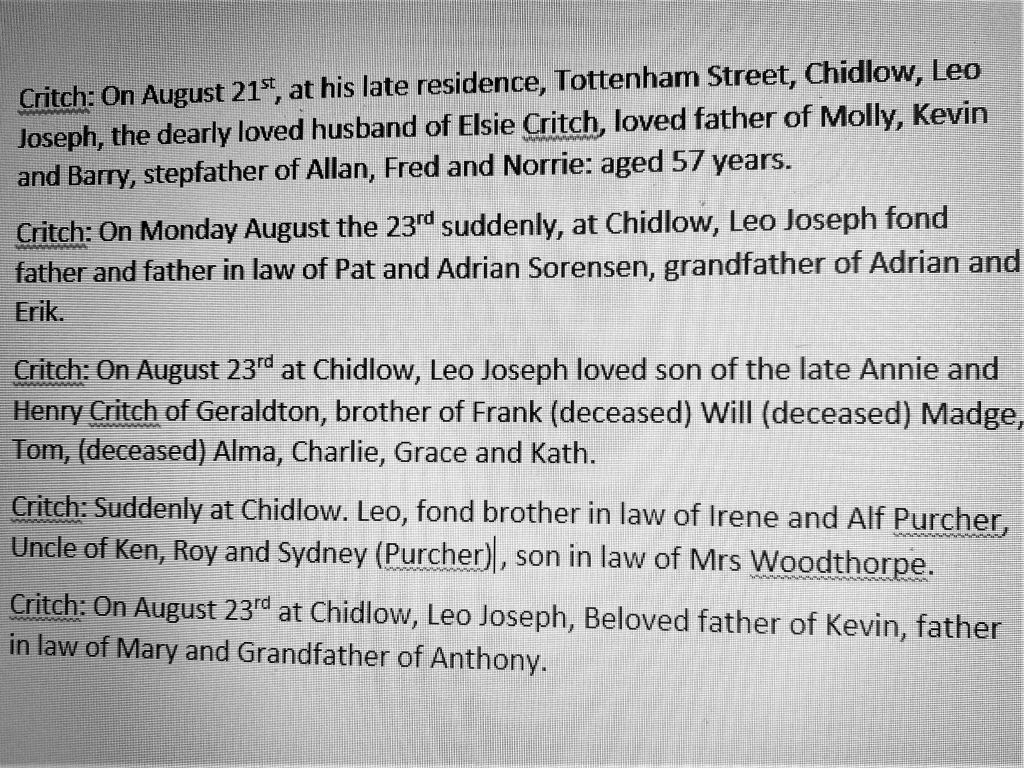
Mary and Kevin produced a further three girls children in Geraldine (Eastman), Pauline (Pearce) and Josephine Critch (formally Blatchford)
From Anthony Joseph (Tony) and Judy (Gardiner) there are 4 offspring, Daniel, Penny (Regan), Tim and Jerome who between them have who have produced 14 offspring including a further 5 males with the Critch name to date…………
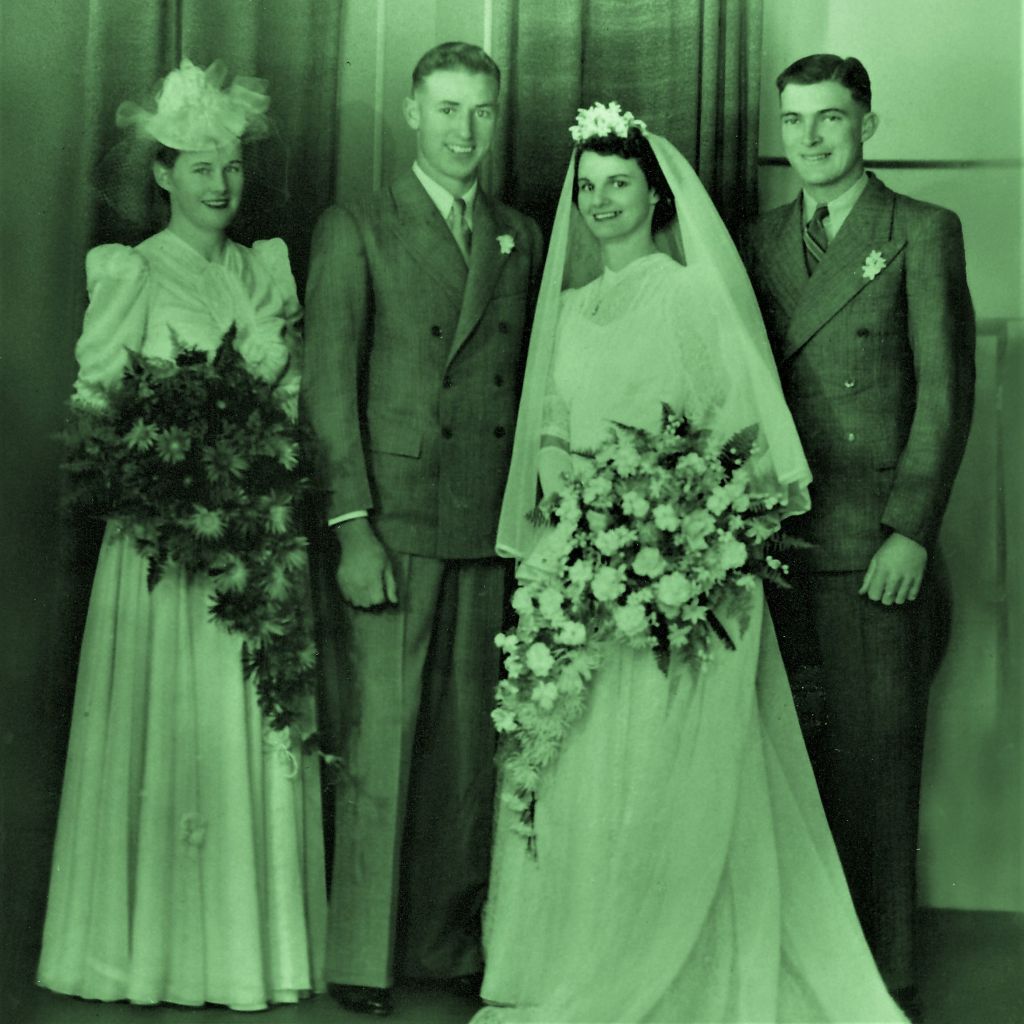
Barry, Leo’s third son, married Shirley Rimmer in the Anglican Church in Carlyle in 1962. Barry, being some 14 years younger than Kevin and the product of Leo’s second marriage, also spent time working with the Williamson family at Yuna and he also spent some time working with and share-farming for Kevin in his formative years. Subsequent to that (1960) in the heady days of WA’s broadacre agricultural development boom, in which the State was throwing open a million acres (400,000 hectares) a year and that much and more was being cleared for cropping, Barry found himself in the thick of that action operating bulldozers, clearing scrub and building dams, particularly in the Esperance area. He met Shirley in Perth not too long after she had immigrated from England with her mother in 1950. Immediately after their marriage Barry, with his bride, went back to Tenindewa as a couple, working with his brother Kevin for about two years. Barry stayed in agriculture for most of his working life filling various roles with the Western Australian Department of Agriculture as it was then known.
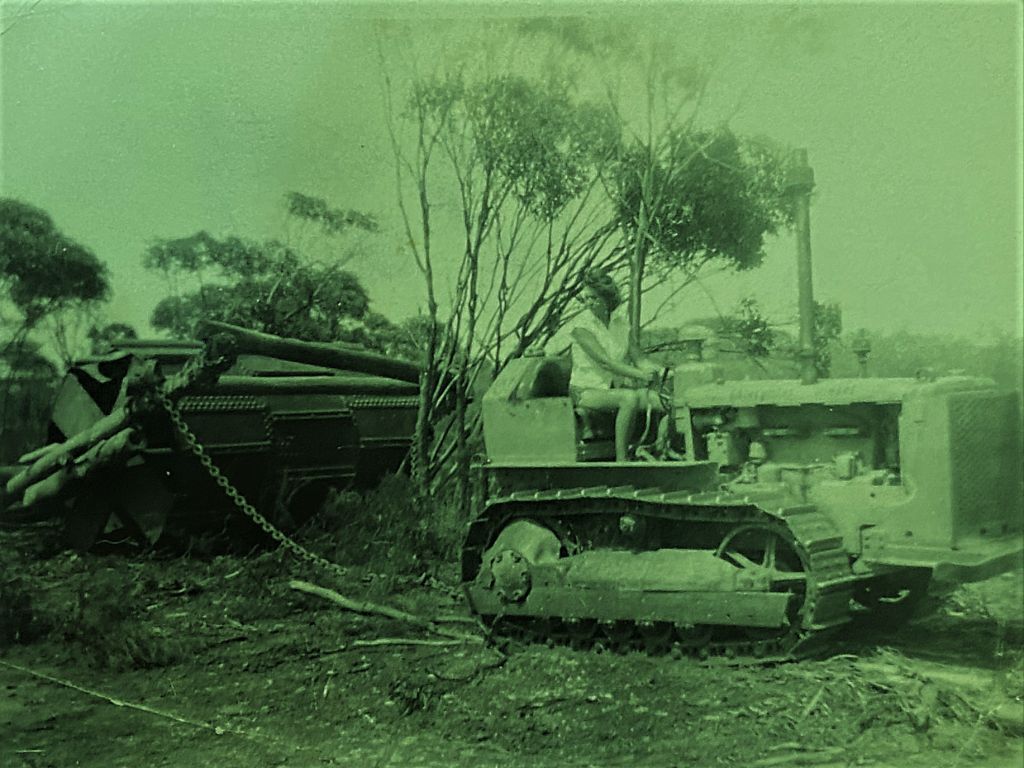
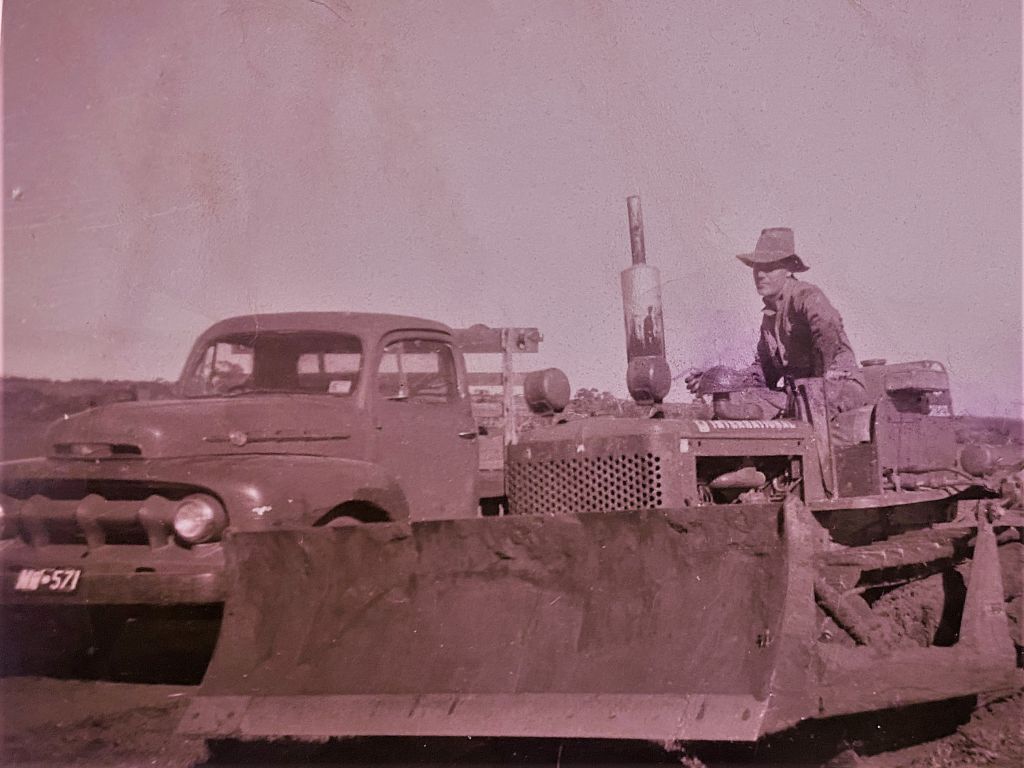
Although Leo had passed on, there would have been a shout from the grave no doubt when Barry and Shirley produce Craig in 1966 and a daughter Kerrie in 1968.
Craig and wife Cheryl (Wright) have produced Josh and Isabel while Kerrie has produced sons Jason and Nathan and due to circumstance, all the boys carry the Critch name giving strong possibilities that this line could be expanded into further generations…………….

Post Script
Given that Leo Critch had passed away in 1948 after a lifetime of ups and downs, but with the bias being prominently on the downs, one ponders on the ridiculous, and runs the scenario of, “what if Leo came back today”? Looking back, we know by way of reading the above he was a product of biggish family who would not have been considered poor or underprivileged given that period and its deprivations. However, unfortunately for him, and no doubt he would have come to the same conclusion, he chose agriculture as a profession, and he chose it during one of the roughest, toughest times in the entire history of Western Australian Agriculture. Those pioneers not only had to purchase the land, but they had to equip it, establish its dwellings and sheds, and more, all simultaneously. Looking back 120 years, it’s so obvious now they were ridiculously ill-equipped in all facets. There was no history to guide them, no paternal blueprint or role model to copy from and if the cards didn’t fall right and the bank manager was lacking the necessary intestinal fortitude the “settler”, as he was termed in those days, was bound to fail.
To paraphrase a term that Leo himself might just have coined, “They were all simply on a hiding to nothing”
For the record they mostly did fail. In fact, by the end of the 1930’s there were very few of them left in Tenindewa and for that matter in much of agricultural Western Australia, but yet somehow, a few just hung on and hung on, and of those some eventually clawed their way back. Incredibly, but with thanks especially to technology, modern machinery and access to competitive finance, Tenindewa, and most of the dry outskirts of the WA cropping belt recovered and consolidated to the point that in the modern era these areas have grown as much grain in the years 2010 to 2022 as they have in all of history.
By way of example and on reflection it’s worth noting that the Brenkley family, who would be considered one of the most successful pioneering families ever to come to the entire Mullewa district, were also foreclosed on in that depression-wracked 1930s.
Doug Brenkley volunteers the fact, that Walter, his father, was given the red card (by probably the I.A.B) in that period. As Doug points out Walter tried desperately to sell on three occasions to satisfy the bank but to no avail. There were just no buyers at any price so Walter pressed on despite the Bank giving him the ultimatum to vacate. The plucky Walter called their [I.A.Bs.] bluff time and time again and flatly refused to leave. The rest is history.
[The I.A.B. stands for the Industries Assistance Bank and its beginnings and its present are outlined by clicking on I.A.B.]
As mentioned in the beginning of this story Leo was assisting his father and probably earning a few shekels for himself writing a column for his Editor father at the “Geraldton Express” and many of those stories are to be located on this website by clicking on “Tenindewa Notes” .
Its quite fortuitous that if one scans those stories it is possible to virtually read what was going thorough Leo’s mind in those difficult and desperate times. He, as the journalist and representing his fellow “settlers” hits on the I.A.B., he hits on the Railways and he hits on particularly the Road Board (Local Government) time and time again. He virtually takes on the task of “advocate” and “agitator” representing his fellow “settlers” or “cockies” as he terms them in his many, many contributions.
From the point of view of a relative (grandson) and as a farmer that has farmed that very same land one can feel the pain incased in the sentiment he verbalizes to the newspaper. To be fair he does express some elation and jubilation, on behalf of those “settlers” on the occasions that those good times came around.
In reflecting on all of the above, two extraordinary things about building this story have been, that (one) 120 years after Leo began toiling the red soils of Tenindewa it has been possible to ferret very pertinent information from both of his sons that survived to very respectable ages. Firstly, via the late Kevin Critch’s book which is to be read on this website titled, On the Road Again, and (two) having the privilege of being able to speak directly to Leo’s generous and alert son in Barry Critch. (born 1934)
Further to this the information gathering and collating of Geraldine (Gerry) Eastman nee Critch (another of Leo’s grandchildren) has, along with the Trove website all been manna from heaven in linking events and dates etc.
Footnote
As a final word on Leo and his connection to Tenindewa it is worth noting that in 1948, soon after Elsie and Leo had sold the Chidlow farm he had spent the last days of his life belatedly fixing up his income tax returns. It was well known he had a great mind for numbers (some say an extraordinary mind for numbers) but he was loath to write them down and tendered to keep them in his head. But as a final post script and just how and why, again thanks to Doreen Butler’s data, we see Leo still held land in Tenindewa right up until 1929-1938 [sic] which would account for his continued interest in Tenindewa and the continuation of articles to the “Express”.

For the record the land referred to here and owned by Charles Joseph Stafford was also eventually forfeited to the I.A.B by the end of the Great Depression. It was eventually acquired by one of the “Depressions” great survivors in the name of Tenindewa’s notorious Harry Stokes. It is important to note that Harry must have been one of the “coolest” of operators in the State of Western Australia in the 1940s and by 1950 he is reputed to have owned as much as 20,000 acres (8,000 hectares) stretching from North Tenindewa to east of Mullewa. History suggests that the Bank was (by then) keen to clear the decks of these “nuisance blocks” of land from their books as the financial world was waking from its period of economic horror and Harry, who had a big family, was keen to expand and thus it is reputed he would just patiently and politely keep offering ridiculously low bids to the I.A.B and others until they capitulated!
As this story alludes, a portion of the Tenindewa land belonging to Stokes, by providence included the land originally held and developed by Leo Critch and his brothers, Charlie and Tom, was purchased from the Stokes family by Kevin Critch, Leo’s son in 1955 and, again as the story alludes, Kevin had not the slightest knowledge that his farther had owned it. In somewhat of an accidental tribute to Leo, and for the record, that land is still in the Critch name some 120 years after Leo and Family had originally taken it up.
Many of Leo’s contributions to the Geraldton Express contained reference to his abhorrence of the I.A.B.
Below is an example. It goes without saying that Leo too was a creditor of the Industries Assistance Bank!
March 25th March 1916
Tenindewa Notes (From our own Correspondent)
Farmers in almost all cases have finished stripping, and wheat carting, so the wheat scheme should have a very large heap of money in hand in their wheat stacks. The farmers are anxious for a divi [sic] from the I.A.B. who own most farmers. I do not think there will be a large quantity of wheat grown this coming season. Most farmers are very dissatisfied at the treatment of the Board, and their methods of dealing with correspondence is absolutely the worst I have seen or heard of. [Board of the I.A.B.] Fancy three acknowledgements for interim receipts received by the one man in three separate envelopes and three stamps all the same postdate. This means two envelopes and two stamps wasted beside time etc. in a well-regulated office such a thing should not be possible.
Mr. Norman Fry has just returned from a trip East where he has been spending a six-week holiday. He is looking very well and enjoyed himself and no doubt has brought some new farming ideas back with him from the wise men of the East.
September 12th 1916
Tenindewa Notes (From our own Correspondent)
Another thing that would save farmers pounds is a crop insurance carried out by the I.A.B and I am sure if each farmer paid 90 shillings ($1.00) per year it would be enough for a general policy covering all farms. I do not think many hundreds [of pounds] are paid annually for burned crops. At present it costs about 10 pounds ($20.00) annually for two months insurance and that is only for fire. The I.A.B. have inspectors in each district, so the insurance should be easily arranged.
June 2nd 1917
Tenindewa Notes (From our own Correspondent)
Things farming have been very brisk this way, and there is a very large area under wheat again, and almost all have finished seeding operations. We have had a great number of frosts this month, with ice on the troughs outside and some farming people predicting a bad season. Since the frosts we have had light rains, and some of the crops are up and looking well. Mr. Fry’s crop is the most forward seen so far. It is Fairbank.
Stock are looking well, and lambing is going on. Horses are a bit on the warn side and are spelling after their hard toil. I wonder why farmers do not go in for some of the smaller kind of tractors, instead of using horses? Perhaps it is owing to their not being advertised. If the agents had any rush left, they would give trials.
I.A.B. farmers are finding themselves in much difficulty in obtaining replies to important matters at present, as under the old regime, and the accounts for 1915, are not yet rendered to farmers complete, and although the I.A.B have received two sixpenny dividends from the Wheat Pool, for 1915, they have not even advised farmers, and what they have done with it goodness only knows. The outside creditor appears to receive very little consideration. Half a crown per bushel has been paid for 1916-17 crop, and none of this has been paid to outside creditors yet.
If the wheat scheme had been handed over to two or three outside trading firms, I am bold enough to say, things would have been different. The I.A.B. is running the farmers further into debt, and interest upon interest is being charged. They have their officers running all over the country day after day paying cheques to farmers, whereas these could be sent to them, or paid to their credits at Banks, in the majority of cases. If they visited the farms once in three months it would be enough in 90% of the cases, as the farmers are soon summed up. This all comes out of the farmers, and also the cost of an army of officials in Perth., half of whom should be in the firing line, because girls could not do worse than have done, and would probably do a lot better.
Some time ago a Royal Commission toured the country in style and examined numerous cockies to find out why farming did not pay, and to suggest better methods and improve legislation Has this been put in W.P.B. [probably means Waste Paper Basket?]
July 29th 1919
Tenindewa Notes (From our own Correspondent)
Everything in the garden, as far as our crops are concerned is lovely. With rain every week, and a little sunshine, things look very nice. The Kockatea Creek has been running a good while, and for a few days was very hard to cross safely. One or two residents narrowly escaped being washed down. Some settlers had to go miles around and over the railway bridge to get to the post office and siding. Stock are looking well and lambs are to be seen in some paddocks.
Mr. Fry has just returned from Victoria, where they are also having plenty of rain.
Our new state school teacher appears to be getting on well with the children. They like going to school–a good sign, I think.
There is great dissatisfaction amongst farmers against the I.A.B. who give the single farmer five shillings a day, and instead of that being handed to them monthly, they go to Geraldton for it or write. At one time the inspector came regularly each month. The I.A.B. are not paying any farmers debts from last harvests receipts. This is now the forth year they [the I.A.B.] have appropriated the lot. When will Geraldton business people wake up and demand their share. The I.A B. farmers are going out of pigs, because the I.A.B. take the proceeds. After four years working solid for the Board is it not time farmers were given freedom, so that they can pay their old debts.
Geraldton Express August 25th, 1926
(From our own Correspondent)
Extracted from (Tenindewa Notes)
Of course, you have heard that, that good old battler, H.J. Stafford, has sold out. yes, it is a fact all right. Sold out, but not yet got the money. But leave it to “Staff”. He will make the I.A.B cough up his whack, for bless your heart, though he is 63 years of age, he has heart like Nelson, and is as game as Ned Kelly. “Staff’ should have been a general in the great war. He is full of fight, and he tackles anyone or anything. Good luck to the old digger.
Tuesday 2 March 1915.
A real live hurricane visited Tenindewa on Thursday night last. (25th February 1915)
Things began to get lively about 9.00 PM and up to 11.00 PM we had just as full and exciting time as anyone would wish and some very close calls to a funeral occurred. However, they say all’s well that ends well and this is so far as life is concerned.
The wind must have reached 80 miles per hour (130 kilometers per hour) and every building I know of must have suffered. To commence with, Mr. Fry’s new residence suffered by the loss of a few sheets of iron and his late residence, a fairly large iron building, was blown to the ground.
Mr. Leo Critch had his house flattened entirely. Fortunately, he and his brother Tom happened to be away for the night camped on a job they were doing. At the height of the storm, they left their tent [at the site of the “job] and not long after a huge York gum fell right across it, breaking their bunks?
Mr. Sid Green, the railway ganger, [“ganger” denotes the man in charge of the gang] suffered too. A large York gum fell right across his house, on the portion that the Post Office is kept in, crushing it flat to the ground. They were all in the adjoining room and they lost no time in vacating it and passed the rest of the night in the Railway Goods Shed. The Telephone Room at the same place is now standing wrong end up.
Mr. Stokes had to strain all his muscles to hang onto his house all night.
Mr. Tom Shaw had a very trying time too and had just managed to get his wife, who had fainted, from the house when it turned over. (see note at bottom of page)
Messes Palmer and Johnson also suffered by the loss of [roofing] iron etc. Fortunately, Mr. Palmer had plenty of assistance, so they managed to hold their roof together. Mr. Johnson and his family had to pass the night under his dray, and it rained inches (an inch is 25mm) during that time, but all the outhouses were destroyed.
Brenkley Bros house turned partly over and is uninhabitable.
Mr. Stafford lost all of his outhouses and found some of his iron; some he thinks is down Mingenew way and he is not looking for it. A few sheets of iron came off his residence also. All the settlers suffered to a considerable extent, but a few I have not heard from. The creek is running a banker, and the ground is very soft.
Hundreds of York gum trees and others have blown down and in some places acres of trees have been levelled to the ground. It is an ill wind that blown nobody any good and in this case I have heard of a man just closing for a 100 acres (40 hectares) clearing contract and ½ his stuff has been blown over. Anyhow we are not anxious for another blow. It is the worst I have ever seen.
Guardian Note: The storm caused extensive damage to many towns around Geraldton and beyond. Similar stories were received by the Geraldton Guardian from Northampton, Carnarvon, Cue and Mingenew, as well as smaller centers such as Nabewa, Yuna and Tenindewa etc.
2015 Note: Mullewa, according to BOM records received 70 mm of rain from the 24th to the 26th of February and 100 mm for the month: Geraldton very similar: Northampton 100mm for those three days and 140mm for the month and places as far away as Cue with 50mm for the same period. One could imagine rivers such as the Greenough would have run some huge amount of water on that occasion!
Incidentally in roughly same calendar space in 2000 cyclone Steve dumped similar amounts of rain in the area and earlier in the NT and QLD. It was the wettest system ever recorded to affect Australia. (The Tenindewa/Bindu gauge received 100mm from “Steve”)
Guardian Note: Elisabeth (Kember) Shaw was seven months pregnant with her 3rd child Thomas when it happened, so no wonder she fainted. Elisabeth’s young sister, Chris then aged 14, was staying with the family at the time and probably helped Elisabeth through the pregnancy.
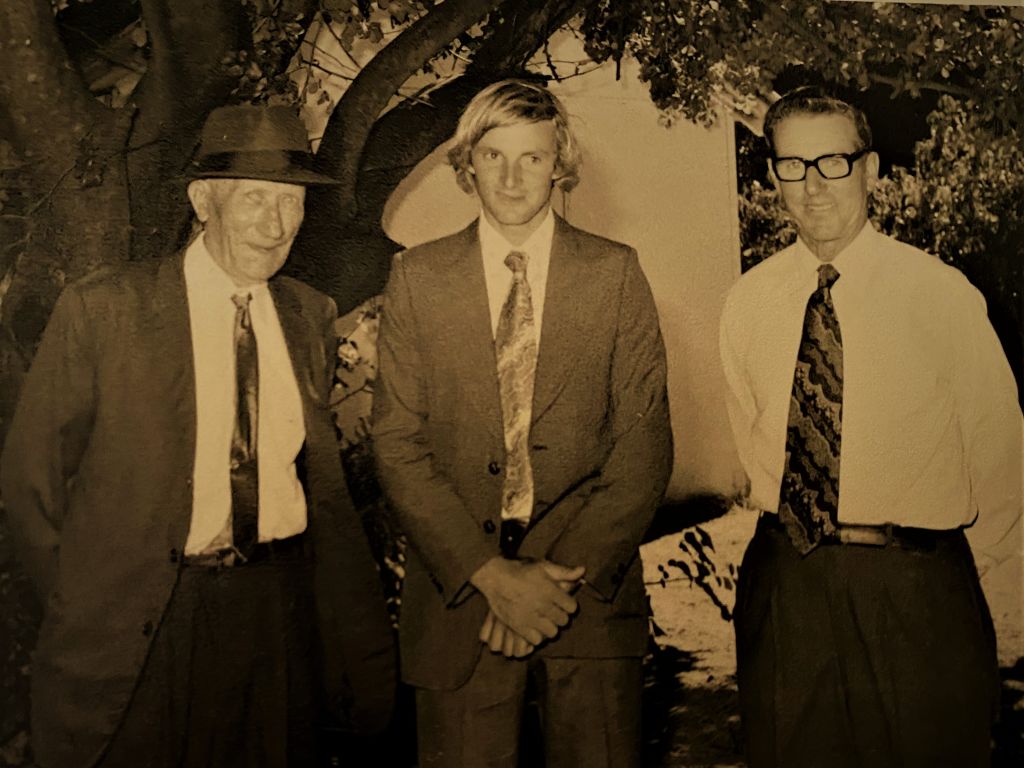
Charlie (Leo’s youngest brother) Tony and Kevin
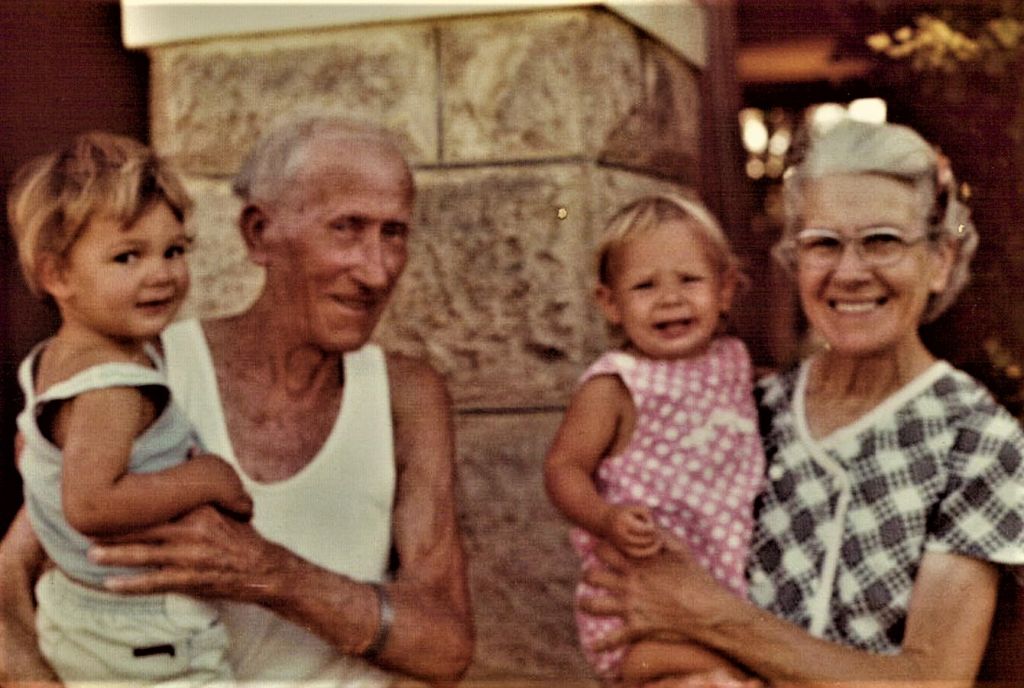
Spanning 4 generations (1978)
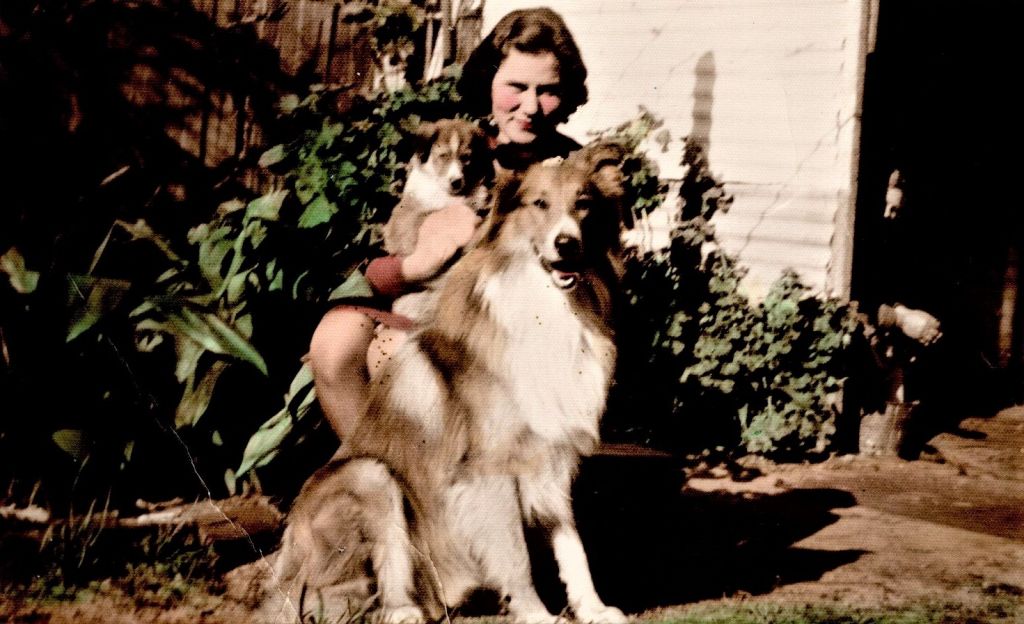
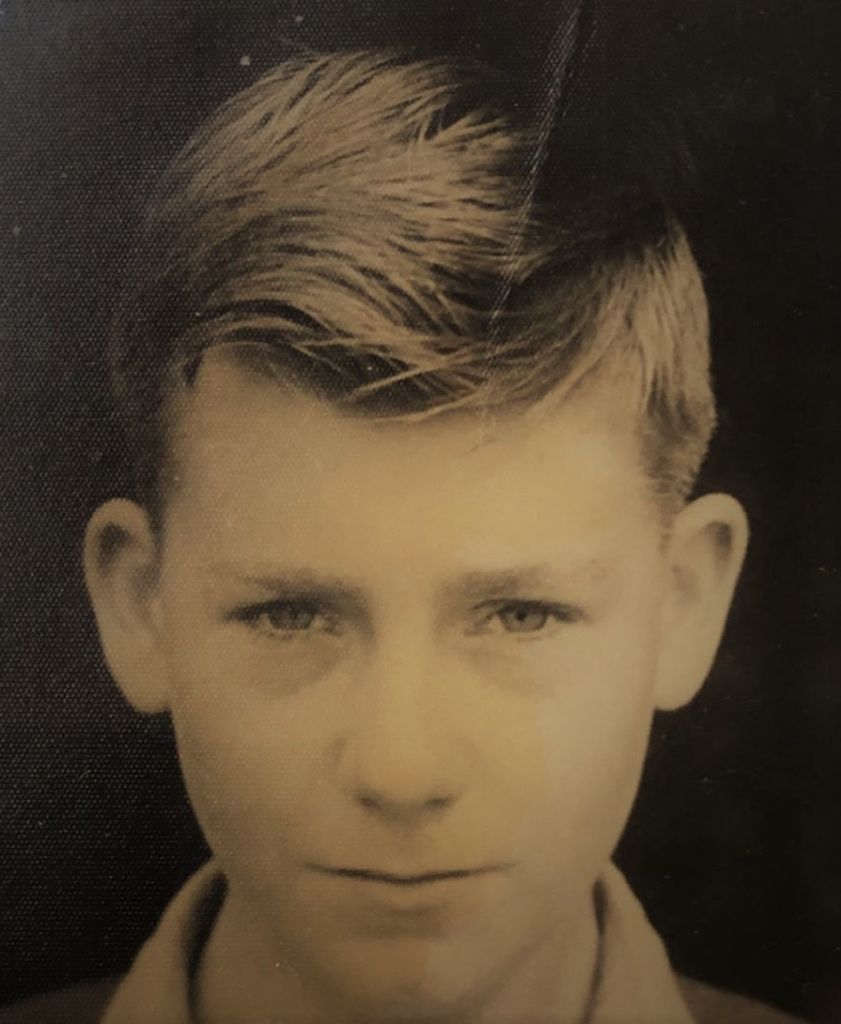
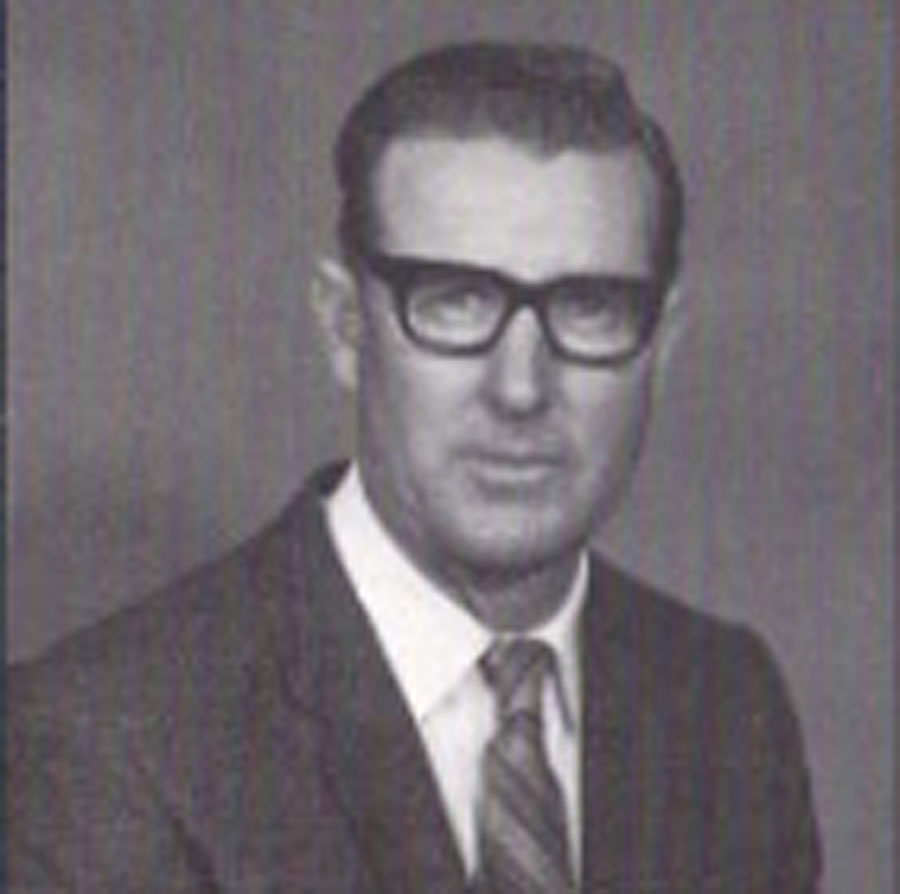
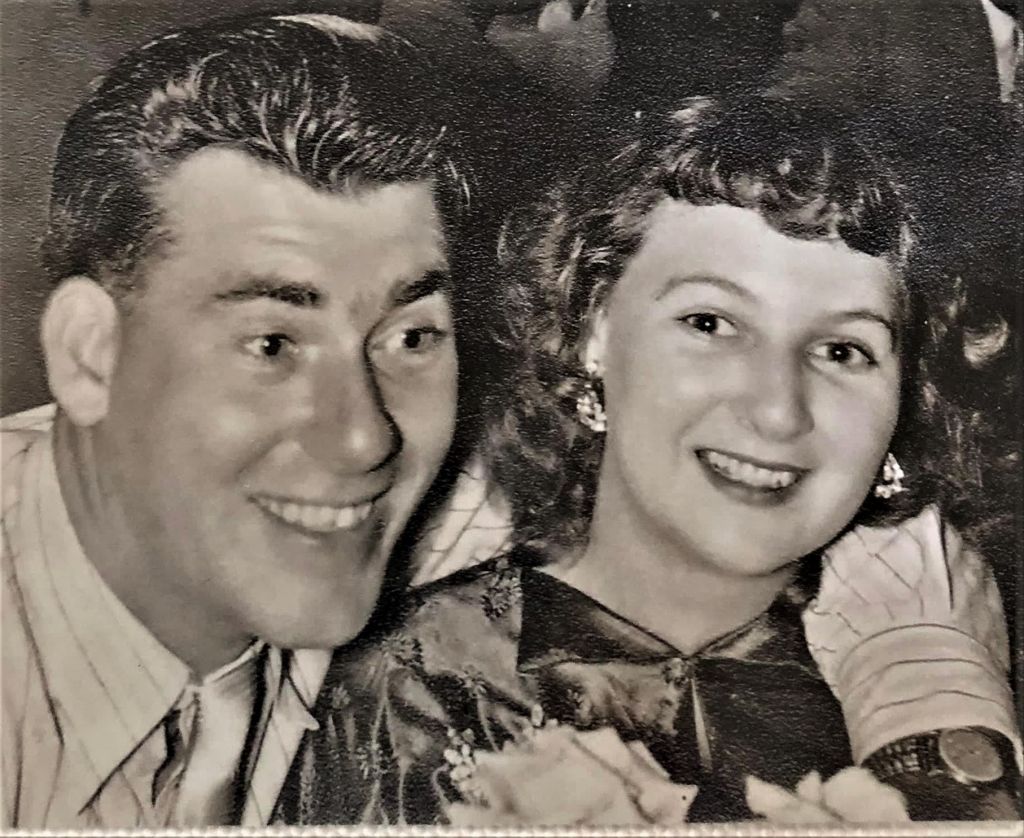
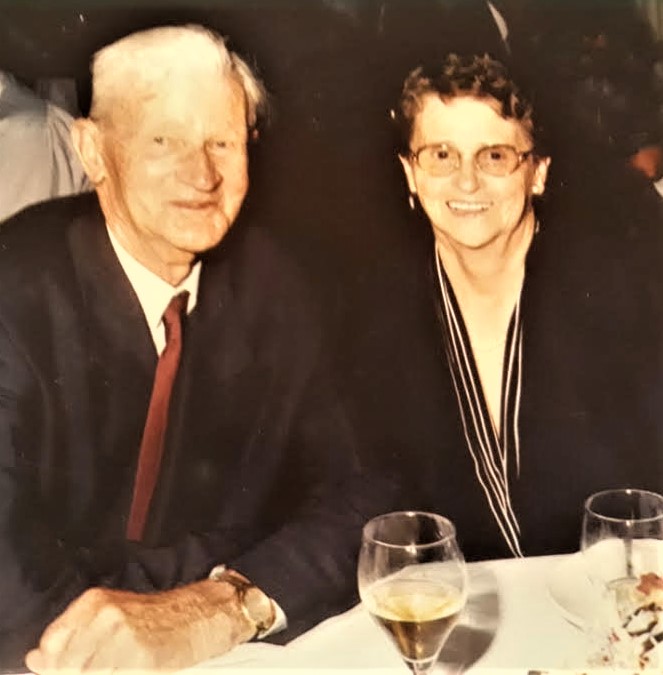
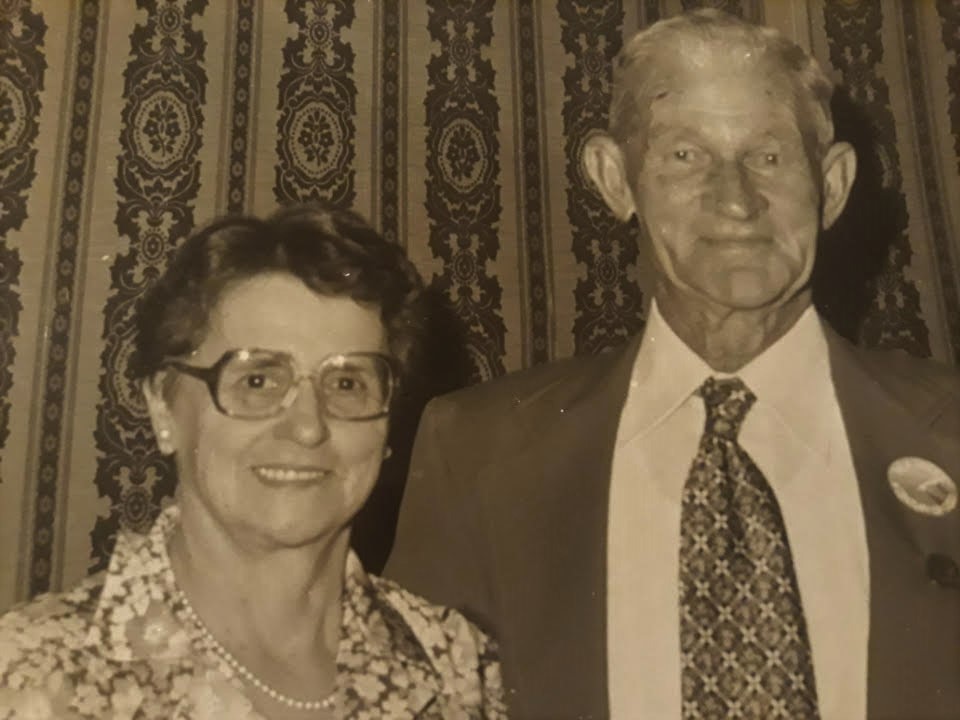
Presentation of Marks’s Citizen of the Year presentation at Carnarvon 1986.
Mark also worked on the Tenindewa farm in the late 1950’s
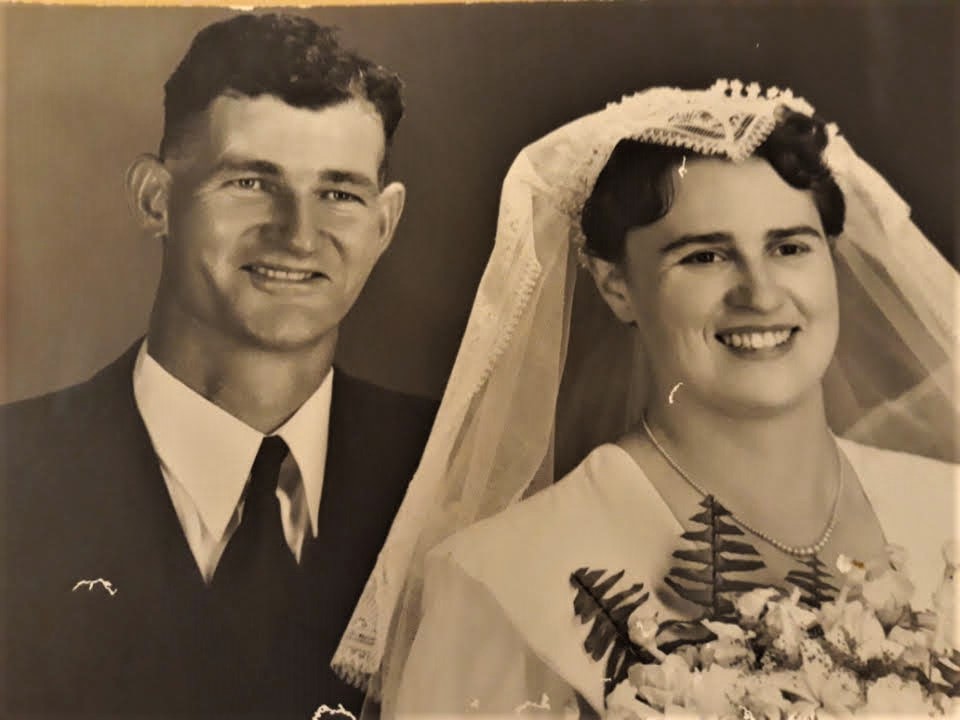
Wedding Day 1948.
Mark’s father was Tom and his son is Tom and his grandson is Mark. This couple were to spend many years in the Mullewa and Murchison Districts and also in the Gascoyne managing Glenburgh Station
Wedding (Critch—Egan)
Extract Geraldton Express
January 22nd, 1909
The marriage which took place at St Francis Xaviour’s Church, Geraldton on Wednesday morning last at 8 o’clock, between Mr. Frank, J Critch and Miss Agnes Violet Egan was witnessed, notwithstanding the early hour, by a large number of friends of both brise and bridegroom. A nuptial mass followed the interesting ceremony, the celebrant being the Rev. Father O’Malley, assisted by the Rev. Father Ryan. The bride, who entered the church on the arm of Mr. Critch sen. (who gave the bride away) looked very charming. Mr. Will Critch (brother) acted as best man, and the bridesmaids were Misses, Madge and Alma Critch (sisters to the groom), Miss Ethel Egan (sister to the bride), also accompanied the bridal party. The bride was attired in a handsome empire gown of cream Chinese silk, trimmed with real lace and Brussels net and silk tassels, the underskirt being embroidered trimmed with medallions of lace, the usual veil and coronet of orange blossoms were worn. In her hand she carried a prayer book. The bridesmaids, Misses Madeline and Alma Critch, wore —the elder–a pretty dress of cream silk trimmed with Paris lace and insertion, and a white crinoline straw hat trimmed with chiffon and plumes and gold buckles; the younger wore a dainty dress of cream silk and white leghorn floral hat. The bride’s “going away” gown was of eau-de- nil Sicilian cloth, the coat being made in biotecture style, and white and black chip straw hat, trimmed with tulle and black plumes.
After the marriage ceremony the bridal party and friends partook of breakfast at the residence of the bridegroom’s parents. Among those present were: – The Rev. Father O’Malley, Mr. J. M. Drew, MLC, and Mrs. Drew, and Mr. A.E. Goodison, Mr. and Mrs. J. Kelly, Mrs. Commerford and Miss S. Commerford, Miss E. Kelly and Mrs. F. Pead. The toast of “The Bride” and Bridegroom was proposed by the Rev. father O’Malley, and responded to by the bridegroom: [The toast to] “The Bridegroom’s Parents” by Mr. J. M. Drew and responded to by Mr. Critch (Sen) and [The toast to] the Bridesmaids by Mr. A. E. Goodison and responded to by Mr. Will Critch.
A Social gathering in the evening for the younger friends of the newly married couple, brought a very happy day’s festivities to a close.
The following is a list of wedding presents: —
Mr. and Mrs. Critch, house linin; Mr. Will Critch and Miss. M. Critch, dinner service; Mr. Tom Critch, table; Grace and Kathleen Critch, prayer book; Miss Egan, wedding outfit and bedspread; Miss Ethel Egan, tea pot and milk jug; Mrs. Lynch (Frem), cheese dish, sugar basin, specimen vases; Mr. and Mrs. Chapman (Frem), panels, pickle jar and ash tray; Mrs. Ellis (Vic Park) ornaments; Mr. and Mrs. Drew, cheque; Good Shepard Nuns (Leederville) tray cloth; Miss Madge Poulsen (Bunbury) entre dish and cigar case; Miss Burton, bread-fork; Mr. C and Miss V. Hepburn, (E.P.) jam dish; Mr. and Mrs. Goodison, silver egg cruet; Mrs. Craig, pair of vases; Mr. and Miss D Craig, afternoon teacups; Mrs. Commerford, case of carvers; Miss S. Cummerford, (E.P.) butter dish; Miss U. Stone, honey jar; Mrs. and Miss Read, glass salad bowl and comport; Mr. and Mrs. T. Houlanhan, gents’ gold dressing ring and silver serviette rings; Miss E. Morrissey, pair vases; Miss A. Connet, cut glass and silver suits and spoons; Mr. W. Earl, silver service rings, Miss Taylor, butter knife: Mr. J. and Miss Kelly glass dish and comport; Mr. R. Hutchison (jun) water jug and glasses; Mr. Dudley Pope, (E.P.) jam dish; Mr. C. Malley and Miss. Dornan (E.P.) butter dish and knife; Miss E. Kelly, pillow shams.
Wedding (Critch – Norris)
Extract Geraldton Express
New Year’s Day 1914The wedding of Mr. Thomas Victor Critch, third son of Mr. and Mrs. F.H. Critch of Shenton Street, Geraldton, to Miss Louse Norris, the eldest daughter of Mr. and Mrs. M Norris of Stoke-on-Trent, England, was celebrated at St Francis Xaviour Church, by the Rev. father Meagner on New Year’s Day.
The bride who was charming robed in a dress of white charmeuse, trimmed with the new white silk shadow lace, draped skirt caught in the centre front, with a spray of orange blossoms and shadowed lace at foot, draped bodice with lace and tiny pearl buttons pointed train with the letter L in orange blossoms and true lovers knot in ribbon. The usual wreath and veil were worn, and a bouquet of white roses, carnations and asparagus fern was carried. The bride was given away by Mr. Frank Critch. (Brother of the bridegroom). Mr. J Kelly (cousin to the bridegroom) acted as chairman. The bridegrooms were Miss Alma Critch (sister to the bridegroom) and Miss Everlyn Kelly [cousin and future wife of Tom Moore] the former wearing a white linen skirt and embroidered coatee, large white chip hat trimmed with tulle and cherries, the latter [wearing a] pretty embroidered dress, white chip hat trimmed with tulle and daisies.
After the ceremony the party drove to the residence of the parents of the bridegroom where the wedding-tea was held, about 24 sitting down with the Rev. Celebrant.
The presents were numerous and valuable.
Thomas, according to the research presented in this story, had spent time working on the farm at Tenindewa and was no doubt part of the “Critch Brothers” as referred to in “Tenindewa Notes” in articles of the day. He and Louisa produced son Mark in 1916 but tragically she died soon afterwards at York, W.A. Son Mark was then cared for by grandparents Francis Henry and Annie until Annie’s health started to fail in 1924. Grace Critch, Mark’s aunt, took over his upbringing until Thomas remarried in 1925. The new bride was Miss Elisebeth Scott, but tragedy of tragedies occurred when Thomas died of a heart attack in 1926. Grace Critch soon after married Bert Collins of Glenburgh Station and Mark therefore grew up with the Collins families in the Gascoyne and went on to manage that Station during the 1950s.
During this time at Glenburgh and almost beyond belief, Mark and Betty lost a son to “Cot Death” or Sudden Death Syndrome as we term the condition these days.
Wedding (Critch–Malloy)
Extract Geraldton Express
17th July 1918
On Tuesday July 9th the marriage of Miss Mary Malloy (Daughter of Mr. and Mrs. Patrick Malloy of Wyalong, NSW) to Leo Joseph Critch (fourth son of Mr. and Mrs. Francis Henry Critch of Shenton Street Geraldton) was celebrated at the Nun’s Chapel adjoining the Presentation Convent, Geraldton. The bride was given away by the Mr. John Kelly. Sen. (uncle of the bridegroom) and Mr. E. P. (Pat) Smyth carried out the duties of the best man. The Rev. Father Hawes performed the ceremony. The bride was gowned in a dainty dress of white mere silk, effectively embroidered and studded with seed pearls. The usual wreath and veil were worn, and she carried a bouquet of white flowers and ferns. Miss. Grace Critch (bridesmaid), sister of the bridegroom wore a cream silk coat frock with hand embroidered finishings and cream velvet hat to match. Miss. Eileen Kelly (bridesmaid and cousin of the bridegroom) was dressed in a flesh pink silk crystalline frock, relieved with strappings of same shade with white net hat trimmed with tidy pink rosebuds. The wedding ceremony concluded, the bridal party motored to the residence of the bridegroom’s parents, where cake and wine were partaken of, and the usual toasts (not forgetting absent relatives and friends) were duly proposed and responded to. Many valuable presents were received. The happy couple left for their home at Tenindewa by train the following morning.
Geraldton Express
16th July 1920
BereavementAt York on Sunday, 11th inst., the death occurred of Mrs. Critch wife of Thomas Critch, formerly of Geraldton. After their marriage, Mr. and Mrs. Critch resided at Northampton for about, four years, but about three months ago Mr. Critch, who occupied a position in the Railway Department, was transferred to York. His wife’s’ health, which for several months previously had given cause for anxiety, was not improved by the change, but on the contrary became worse, and the doctor at York advised her husband to go back to the North again as soon as she was able to undertake the journey.
It was otherwise ordained.
After a short though severe attack of illness, the patient gradually grew weaker and passed away on Sunday last at York Hospital where every attention, both from doctor and nurses, had proved unavailing. The deceased, who was widely esteemed and respected, had been in the State about seven or eight years, having come from Burton-on-Trent (England), where her parents and relatives reside. Mr. Thomas Critch has been in the Railway Department four years and is the third eldest son of Mr. and Mrs. F. H. Critch, Shenton Street, Geraldton. He and his late wife were married about six years. There is only one child—a boy four years old. Much sympathy will be felt for the bereaved husband and relatives, and regret will be expressed that a happy wedded life should have been brought to so early a termination.
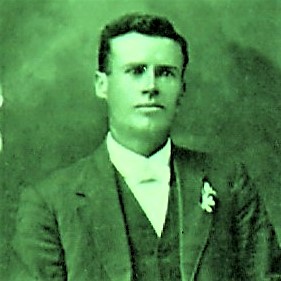
Comments
Hi to the beautiful humans at Tenindewa WA Progress Association. For a long time I read the website as Tender in WA and thought it was a lovely way to reflect on the pioneers of the area. Then I used Google and discovered I was misreading the name, it is actually a town name.
I am a Kelly, one of the descendants of John and Anna Kelly (nee Fox), Anne’s (who married Critch) brother Michael was my great grandfather. Our families stories are getting lost and need to be recorded before they die out. Disconnected stories become too hard for future generations to search for. I am so very grateful to Mr Critch and the family for sharing so much with us all.
I found the comment made very interesting:
So for many reasons there has been no effort made to post a story on this pioneer, Leo, earlier as the Critch mob seemed quite a disjointed and unconnected lot, unlike most of the folk who featured on the , and thus, there appeared to be very little accessible history and family folklore to accumulate into a worthwhile account
Definitely no criticism, I actually wondered if it was me that was disconnected or the family, so it is reassuring to read that our feelings are so similar. I feel it may not just be the Critch family who were disjointed, but the Kelly’s too. I wonder what happened in the 1800s to make families so disconnected, was it just our family or were other families disjointed and disconnected too? Why? When they arrived from Ireland so supportive and connected, was it the tough reality of starting a new life, the loss of lives, crops, missing home that changed them? Was it WW1 that broke our families?
The photos on this site are absolutely gorgeous and so very precious but what Mr Critch has done is a testament to his family values and respect for history, that the history is to be recorded and shared and I thank him and the whole of the Tenindewa WA Progress Association for having this available to people. The photos only ever tell part of a story, its the story of the people that make these photos come alive. That means our family history continues. Whilst Mr Critch is a direct descendant, these are family in lots of trees and its lovely to know who they are.
I have photos in my family album that were nameless, but because of a generous and selfless man, I now know these lovely families and their names. Moya Morris, I have wanted your book for the longest time, I hadn’t connected the dots, that you are Moya Moore. So we must be cousins! Your research is incredible. I would LOVE Moya to get in touch with me please, the Critch family too, any of the Kelly family. It would be lovely to reconnect after whatever happened 150 years ago. Let’s put the family history up together so people know who our family were.
Keep up the great recording of history, its beautiful and so very respectful to our ancestors who risked everything to move to a strange land with no real promise.